Agile project portfolio management is a core requirement for companies that need to direct a lot of projects towards strategic objectives. The adaptability speeding up the response to changes is the key of the agile portfolio management while optimizing developing value, responding to the changes of market, and making everything transparent, so that the teams understand their main goals, progress and potential issues. This paper will describe the impact of the use of agile methods in project portfolio management on the fast delivery of products that satisfy both internal and customer requirements, without being concerned with too much technical jargon or unnecessary complications.
Key Takeaways
- Agile Project Portfolio Management (PPM) continuously aligns projects with strategic objectives using iterative, flexible processes and prioritizes based on factors like strategic fit and potential value delivery.
- Empowering cross-functional teams within Agile PPM is essential, as decentralized control, frequent releases, and real-time progress visualization enhance agility, responsiveness, and operational excellence.
- Tools and frameworks such as ServiceNow’s Strategic Portfolio Management and the Scaled Agile Framework (SAFe) support Agile PPM by providing integrated, real-time analytics, fostering effective communication, and facilitating lean budgeting.
The Essence of Agile Project Portfolio Management
In essence, agile portfolio management is based upon identification, prioritization, organizing, and management of several products to optimize their value development. Such strategic method allows businesses to harmonize their objectives with the expected results and the overall business strategy. Change as priorities with this it is necessary to adjust and rearrange work accordingly.
The agile portfolio management uses the method of managing linked projects and programs, through the application of agile methodologies, where iterative planning, communication across the portfolio, and releases must be frequent in order to deliver value and to achieve continuous visible progress.
In its center exists the iterative approach that calls for a decentralized control and focuses on the improvement. By this model, initiatives will be more coordinated with the market demand and in the end, contribute to gaining strategic goals.

Agile project portfolios are vital for ensuring consistent attention to critical business strategies through ongoing review and realignment of tasks as needs change in the marketplace. Its qualities facilitate more effective supply of customer value in innovative solutions customized for the dynamic market needs.
Understanding Agile Principles in Portfolio Context
The agile portfolio management promotes small-scale projects for quick experimentation. This strategy enables to collect and validate information for the purpose of defining the project course and at the same time minimizing the risk of considerable failures. It also allows for continuous feedback and frequent deliveries that can change according to whatever problems occur.
In the Agile portfolio management, priorities of the project are determined by the operational impact of delay as well as the strategic business outcomes alignment. This also allows for the selection of high value projects in an ordered manner. The agility of agile practices also enhances agility in portfolio management that enables adjustments to be made in areas of resource allocation in reaction to changing customer demands or arising priorities.
The Role of Portfolio Managers in an Agile Environment
Portfolio managers play an important role in pushing transparency and enabling agile teams in the environment with the decentralized control and ongoing experimentation. Scaled Agile Framework (SAFe) for portfolio management enables organizations to scale their Agile implementations at the enterprise level, creating an agility to quickly respond to digital disruption.
Such environment demands portfolio managers to help in decentralized execution and agile teams to maintain operational excellence.
They are crucial in helping an organization respond in time through constant experimentation with new approaches while ensuring the efficiency of operations at all levels.
Decentralization: Empowering Development Teams
Allowing development teams to lead creates better energy and agility to bring Agile practices in place. Autonomy to teams on their workflows leads to the decentralization of control which promotes customizing approaches for portfolio flow and capacity. Agile team empowerment, on the other hand, is promoted through big room planning and Portfolio Kanban systems that provide a common purpose to the team to manage themselves while striving for continuous process improvement and transparency.
Aligning Strategy and Execution with Agile PPM
Agile project portfolio management integrates enterprise strategy and portfolio execution and applies Agile principles and systems thinking through all stages of strategy formulation, portfolio management, and governance. The move to agile PPM means that continuous planning process is adopted and annual planning is substituted with a more dynamic and adaptable strategic framework.
Strategic alignment within the agile portfolio management framework is dynamic such that a continuous practice comes into play to assure all the projects that do not align closely with the strategic objectives are accorded funds and resource hence achieving optimality in the portfolio business value. This guarantees that the whole portfolio remains linked to business objectives with the proper provision of investment funds towards initiatives that continually meet organizational goals and provide real business value.

Balancing Business Goals with Agile Flexibility
Adopting agility into portfolio management entails letting go of the traditional means that center on annual planning that is fixed annual in favour of flexible and responsive methods. The agile approach makes demand management more dynamic because it helps the portfolio plan to quickly adapt to reallocated priorities, resources and market conditions.
Agile methodology for portfolios management is considered as having work aligned with the strategic objectives thereby teams participating in initiatives for the value they bring rather than merely progressing to the next initiative. It combines staged funding associated with incremental releases influenced by customer reaction leading to realized value at every stage of advancement.
Integrating New Data and Insights
ServiceNow’s Advanced Portfolio Management uses Performance Analytics to anticipate trends and allocate resources, thus ensuring ongoing improvements through dynamic analytics. Agile Project Portfolio Management implementation enables what-if scenario planning to manage demand shifts, dependencies, and team interactions besides optimizing portfolio flow and capacity management.
Agile PPM uses an instant planning system that quickly resolves all resource or capacity constraints as changes arise within the project portfolio. This can be achieved through the use of bespoke software, which helps in setting the business goals and OKRs across all levels in the organization, and in measuring the performances to continue improvement activities.
Streamlining Processes for Enhanced Agility
The agile portfolio management practices are introduced to make the projects simple and focus on strategic tasks and resource distribution. Continuous planning is central to this form of portfolio management and is based on an iterative approach, eliminating static methods and replacing them with flexible ones for sudden project changes. The concept applies ‘just enough governance’ so that flexibility is fostered and transparency is maintained without inhibiting creativity and response capabilities to business challenges.
Experimentation in agile methodologies is an ongoing process that helps foster innovation and flexibility through defining project priorities, testing project elements throughout the project life cycle and providing feedback for adapting to emergent issues or changing goals.

Agile portfolio management adoption allows organizations to increase speed and flexibility by responding to feedback and market changes quickly.
Prioritizing Projects for Optimal Outcomes
Agile portfolio management involves ranking and prioritizing projects according to several criteria. These criteria are opportunities of value, strategic fit with core business objectives, customer satisfaction level, financial impact assessment, integration with company strategy, market potential review and resource availability.
Taking these criteria into account in the project evaluation process of an agile portfolio management system enables it to rightfully establish its value and priority in comparison with other competing initiatives. Utilizing of structured ranking approaches like scoring models or decision matrices that employ ‘Cost of Delay’ or Net Present Value calculations can help make this prioritization process more efficient.
By using a combination of assessments and approaches, one gets a clear view of the projects that are more important in achieving the set goals. Features such as value delivery tracking help in recognizing their contribution and keeping them align strategically across business priorities hence yielding a maximum return from every initiative the organization employs its lean-agile approach.
Simplifying Workflows for Agile Project Delivery
SPM ServiceNow enables management of agile development processes, which monitors scrum or development work from the beginning to the end. Frequent releases are a common practice in agile organizations across their portfolio, which provides ongoing visibility into project progress and deliverables.
Rather than releasing massive parcels of code in one go, agile approach in portfolio management makes use of a modular design, which enables independent release streams. This increases the flexibility and removes any wasted consistent planning and assesses projects on key metrics. Such steps lead to the identification and removal of extra features and complications within the Agile Portfolio.
Fostering an Agile Culture across Multiple Teams
Top management has to engage all teams and develop a powerful, agile culture within the organization by applying agile principles at all levels. By portfolio management, senior management can direct and support this cultural change.
Successful Agile teams are built on the foundation of effective collaboration among people from different disciplines who eliminate conventional departmental boundaries to provide quality products. A collaborative setting also encourages emergent architectural designs that are supported by corporate standards. In such large and distributed groups, it is critical that the right tools and practices be adopted to facilitate regular interactions.

Encouraging Cross-Functional Collaboration
The process of organization silos removal is fundamental to the process of creating effective communication and coordination system within a company that further allows for alignment of strategic goals and team-level execution. Cross-functional teams are crucial for empowering the organizations to address complex issues utilizing numerous approaches and uniqueness beyond the regular department lines.
In agile portfolio management, the use of top-level ‘themes’ helps coordinate work efforts from diverse cross-functional teams in relation to the common organizational goals. Agile methodologies favour iterative development processes, and autonomous self-organizing teams that focus on value delivery over inflexible top-down control systems for efficient management of portfolios.
Scaling Transparency and Trust
Agile portfolio management implies transparency, where everyone shares information on project progression and status, bridging the gap between the top-level goals and team actions. It also creates a climate where discussion about barriers is encouraged, public discussion for trade-offs is supported, trust is built within the organization and understanding for how decisions are made is assured.
In this context, PMO is a key player in facilitating conversion to agility by matching portfolio management with the business needs. The PMO is able to boost organizational confidence through the visibility gained from strategic transparency initiatives and facilitating improved monitoring for alignment with business goals.
Further Reading: Decoding The Role Of PMO: Key Factors In Project Success
In addition, the approach makes stakeholders build up the trust due to better understanding of where the project is heading and increase their participation in solving any conflicts or issues that might occur during the process of coming up with decisions.
It finally leads to the successful implementation of agile practices across the whole portfolio. Therefore, while organizations are starting their agile journey it is important to embed its principles in their portfolios with the support of efficient PMOs.
Leveraging Tools for Effective Agile PPM

Choosing the appropriate technology for agile portfolio management is the key to being able to quickly adapt to changing requirements and, at the same time, interactively connect strategic portfolios with projects, programs, applications, finances, and technology needs. For example, Atlassian’s Atlas is used to communicate while team members interact through platforms like Favro and Swift Kanban. Visual systems such as Kanban also provide for better project tracking and participation by multiple users at the same time in agile environment.
The targeted options are plentiful for an agile portfolio management, and Jira is one of the most well-known among them.
Azure Boards, Rally Planview, and Digital.ai Agility. These technologies also provide some feature set to help teams to efficiently organize their tasks such as back-log organization, user story tracking, and standardizing processes across the different departments in large organizations eyeing for an enterprise-level portfolio management.
Visualizing Real-Time Progress
Agile portfolio management enabled organizations improved performance, outcomes and ROI due to visibility and reporting at the portfolio level. Customized dashboard reports in agile PPM systems such as Jile help the executives to take informed decisions by converting data into actionable insights.
Adaptability and integration of a flexible software like Jira enable to track real-time progress of project management under agile approach. Technology based tools of Agile Portfolio Management (APM) allow organizations to get an overall view of their strategy to delivery life cycle and to align portfolios with the strategic objectives.
Strategic Portfolio Management Solutions
The specialized software developed by ServiceNow, Strategic Portfolio Management (SPM), is aimed at enhancing the agile project portfolio management through offering a suite of integrated tools. Some of these features are Release Management for detailed planning and testing, Predictive Intelligence with the help of machine learning to make workflows fast, and Strategic Planning which merges strategy and execution in one collaborative space.
Organizations aiming at agile success need to have solutions like ServiceNow SPM for strategic portfolio management. This will improve the decision-making capacity and at the same time align, responsiveness and streamline the process of execution.
Navigating Business Challenges with Agile PPM
Agile PPM improves value delivery and team agility, making the organization quickly respond to the changes in market dynamics, customer demands, and strategic objectives shift. Such adjustability is an important characteristic of linking project priorities with changing organizational goals, and the agile framework helps the continuous revision and adaptation of the project routes to realign with the moving strategic goals.
The adoption of Lean Portfolio Management promotes consistent business results by: standardizing decision-making processes and prioritization techniques for quicker time-to-value, managing the portfolio flow via well-adjusted concurrent projects with demand-matching capacity, and enabling work practices sustainability to avoid burnout in teams.
Adapting to Market Changes with Agility
The concept of agile portfolio management assumes the requirement for timely reaction and quick changes of project priorities to respond to the changes of market conditions. Agile adoption enables the organization to speed up product and service delivery through more frequent and predictable releases designed to be market-driven.
Agile PPM promotes a modular design with robust APIs, which create a great technical decoupling that allows businesses to alter their strategies without complete overhauls quickly. This lean process makes sure to keep up with changing markets, and also develops a culture of effectiveness and flexibility in the organization’s entire portfolio.
Managing Portfolio Flow and Capacity
Dynamic or agile portfolio management can improve resource allocation effectiveness by ensuring that team capacity is aligned with business demand according to set objectives. This approach further includes lean budgets and control in agile PPM that ensures that development efficiency is maintained while adhering to financial governance principles, thus improving overall resource utilization.
The ongoing decision-making element of agile portfolio management helps to reduce risks related to project delivery by constant reviews of product direction or the possibility of termination. The iterative nature of this methodology allows for continual changes to be made in a responsive environment that minimizes delays and maximizes value delivery.
Further Reading: Key Benefits of Agile Project Management Consultancy Services at PMtech Digital Solutions
Agile PPM as a Core Competency
Agile portfolio management is one of the basic competences of an Agile business. Transformation of the agile movement in the project, program and portfolio management of the whole organization is a process of significant change to project management within the organization.
Traditional portfolio management, developed within a more rigid and linear approach, is unlike agile portfolio management that emphasizes iterative development, frequent releases, and developing a culture of communication and sharing across the organization.
From Traditional to Agile: Transitioning Your Portfolio
The agile principles adoption in an organization induces a change from the traditional approach to project management to a culture where self-sufficient, cross-functional teams collaborate to provide solutions that support the strategic objectives. The adoption of Agile PPM necessitates a broad understanding of agility across the organization and transforming the role of the PMO to facilitate and integrate agile practices into workflows.
Embedding Lean Thinking in Portfolio Practices
LPM uses Lean Governance to make spending monitoring, adherences to rules and communication of results easier and investments are aligned with strategic goals. The implementation of lean thinking enables continuous assessment of portfolio impact and optimization of resource by properly matching capacity with demand.
Summary
The face of the project management has changed greatly and the leading role is played by Agile Project Portfolio Management. The project approach is renewed by concentration on improvement, decentralization of control, and in market demand, aligning initiatives to strategic goals. Agile PPM is about value delivery, transparency and trust, and strategy and execution alignment in a fast moving, digital world of business challenges.
Frequently Asked Questions
What is agile project portfolio management?
The application of an agile project portfolio management system empowers organizations to be flexible in response to tumultuous market conditions with respect to how they control various undertakings. It is concerned with continuous experiment that fits well in a large portfolio made up of many teams and programmers.
What is portfolio planning in agile?
Portfolio planning in an agile framework involves identifying products or projects, their level of importance, and estimated timeline, consequently promoting efficient management and organization of the overall project portfolio.
What are the 5 phases of agile project management?
An agile project manages in five distinct phases which makes it efficient – envisioning, speculating, exploring, adapting and closing. These five are key to any project’s successful planning and execution.
Thus, through the use of these particular stages in Agile methodologies, moves faster in a project.
What is agile Lean portfolio management?
The Lean Portfolio Management of Agile aims to harmonize strategy and execution; applying both lean and agile methods to get rid of projects hindrances, consequently improving customer value.
How does Agile PPM address business challenges?
Agile PPM addresses business challenges by maximizing value delivery, enabling quick pivots in response to changes, and managing portfolio flow to match capacity with demand, with this business agility help companies address evolving customer needs effectively.







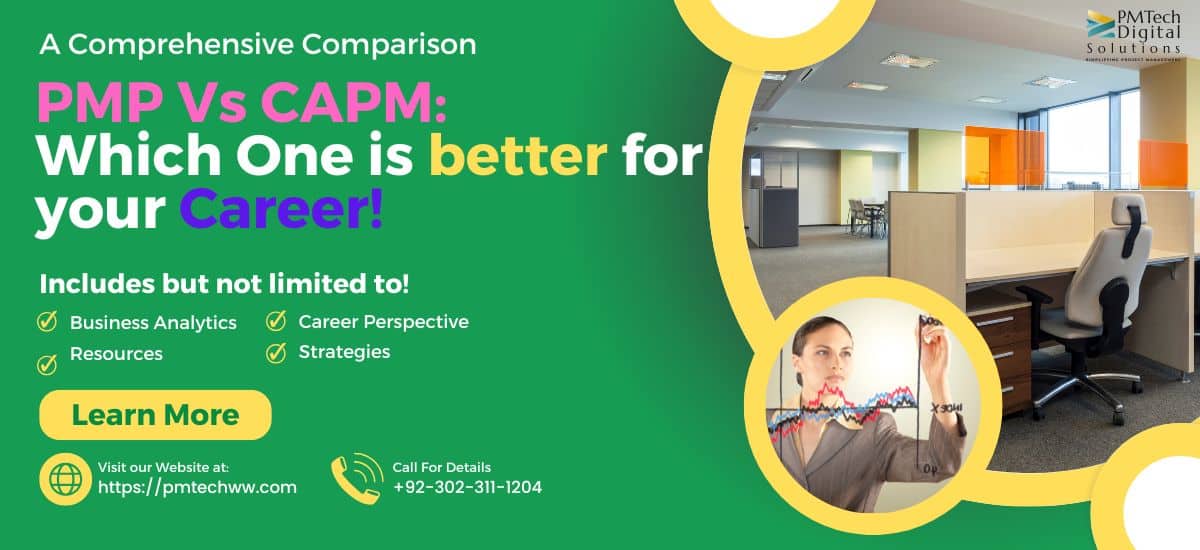

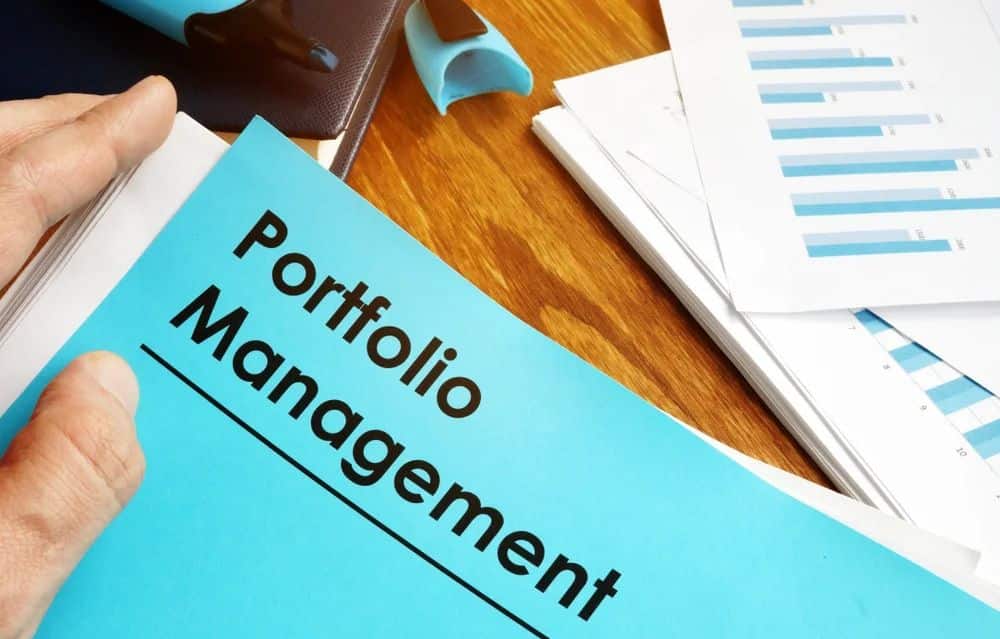



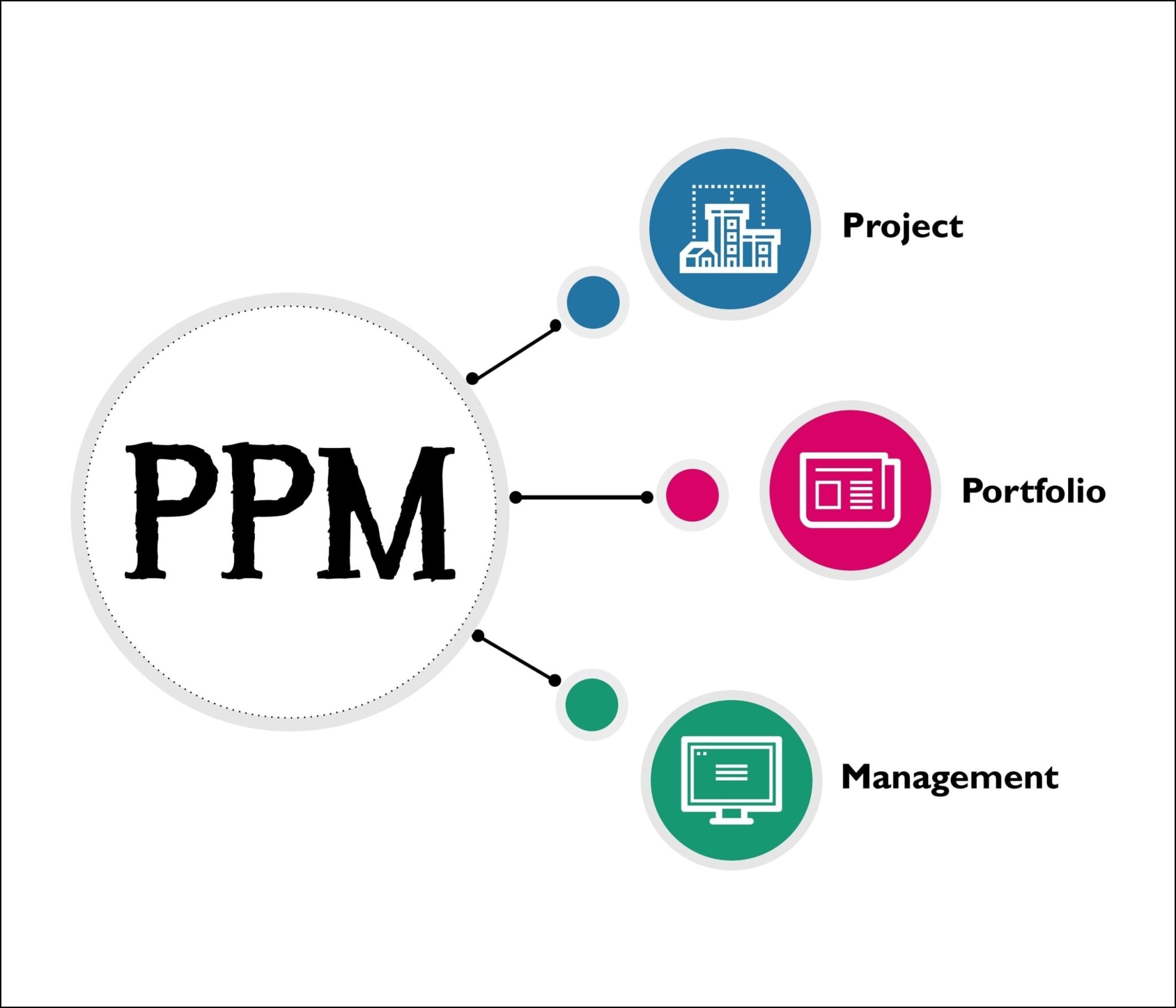
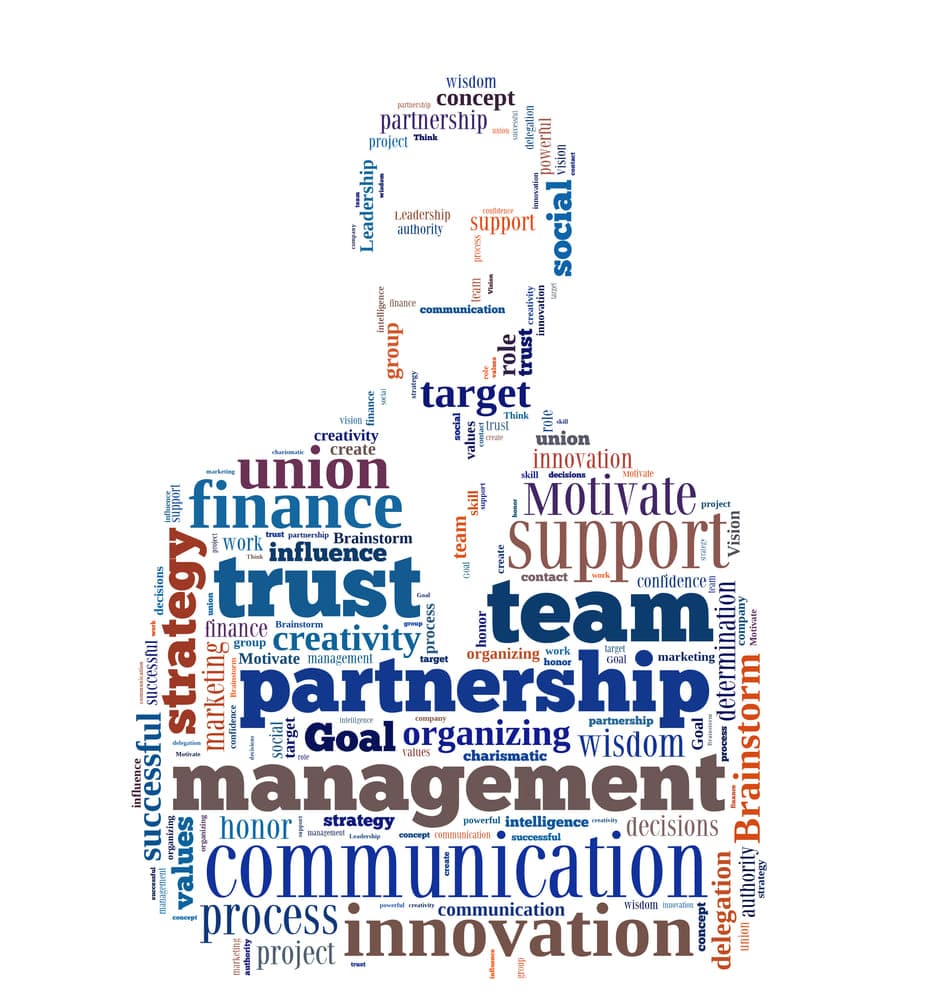
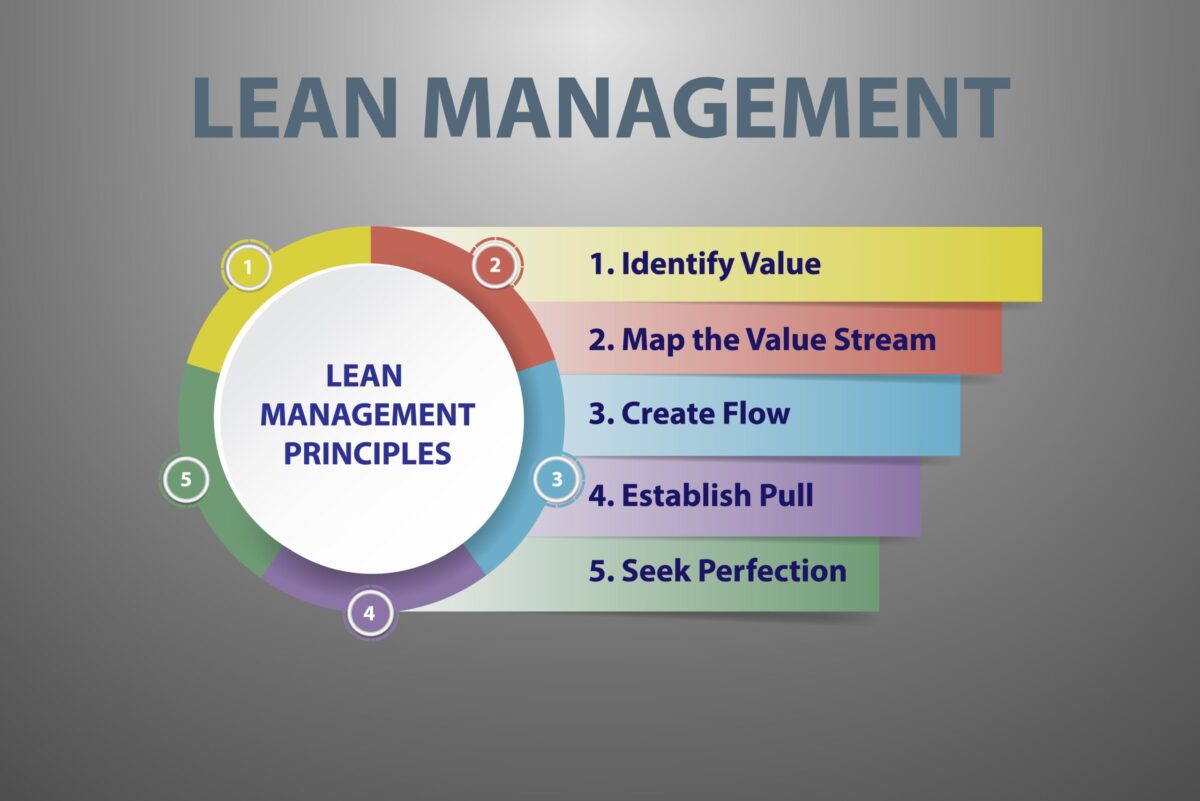


205 Responses
На этом сайте вы сможете найти подробную информацию о терапии депрессии у пожилых людей. Вы также узнаете здесь о методах профилактики, актуальных подходах и рекомендациях специалистов.
http://jemezenterprises.com/banking/when-sustainability-requires-dramatic-change/
На этом сайте вы найдёте подробную информацию о препарате Ципралекс. Здесь представлены сведения о основных показаниях, дозировке и возможных побочных эффектах.
http://PurascaPaeseSwitzerland.eorg.xyz/category/website/wgI2vZFhZf5rbhFqBTP7G0CD1
На этом сайте можно ознакомиться с информацией о системах видеонаблюдения, их видах и ключевых характеристиках. Здесь размещены полезные сведения о подборе оборудования, монтаже и конфигурации.
видеонаблюдение
На этом сайте вы найдёте подробную информацию о препарате Ципралекс. Здесь представлены сведения о основных показаниях, режиме приёма и вероятных побочных эффектах.
http://ZlamnohaMirosovCzechia.omob.xyz/category/website/wgI2vZFhZf5rbhFqBTP7G0CD1
This cutting-edge CCTV software delivers a robust video surveillance solution, featuring intelligent detection capabilities for humans, felines, avians, and canines. As a versatile surveillance camera software, it functions as an IP camera recorder and includes time-lapse recording. The best Video Surveillance Software Enjoy secure remote access to your IP camera feeds through a trusted cloud video surveillance platform. This video monitoring software enhances your security system and is an excellent option for your CCTV monitoring needs.
Макс Мара — легендарный итальянского происхождения модный дом, известный на производстве роскошной одежды премиум-класса.
Основанный в 1951 году, он превратился в символ элегантности и безукоризненного кроя.
https://rantcave.com/showthread.php?tid=21154&pid=76286#pid76286
Иконические пальто бренда завоевали признание модниц по всему миру.
Inuikii — это европейский бренд, известный на функциональной зимней обуви. Он сочетает современный дизайн и высокое качество, создавая удобные модели для зимнего сезона. Бренд использует натуральные шерсть и водоотталкивающие материалы, гарантируя защиту в любую погоду. Inuikii популярен среди любителей активного отдыха, благодаря оригинальным силуэтам и практичности.
http://frombrazil.com/__media__/js/netsoltrademark.php?d=classical-news.ru%2Finuikii-stil-teplo-i-elegantnost-v-zimney-obuvi%2F
На этом сайте представлена полезная информация о терапии депрессии, в том числе у пожилых людей.
Здесь можно найти методы диагностики и подходы по улучшению состояния.
http://armstorfer.info/__media__/js/netsoltrademark.php?d=empathycenter.ru%2Farticles%2Folanzapin-i-bar%2F
Особое внимание уделяется возрастным изменениям и их влиянию на психическим здоровьем.
Также рассматриваются эффективные медикаментозные и немедикаментозные методы лечения.
Статьи помогут лучше понять, как справляться с угнетенным состоянием в пожилом возрасте.
?? ???? ????? ???????????? ???????? ?????????? ? ??????? ?????????, ? ??? ????? ? ?????????? ?????????.
????? ????? ?????? ?????? ??????????? ? ??????? ?? ??????????????.
http://celadonix.com/__media__/js/netsoltrademark.php?d=empathycenter.ru%2Farticles%2Fmeksidol-dlya-chego-naznachayut%2F
?????? ???????? ????????? ??????????????? ???????????? ? ?? ??????? ?? ??????????? ?????????.
????? ??????????????? ??????????? ??????????????? ? ????????????????? ?????? ???????.
?????? ??????? ???????????, ??? ??????????? ? ?????????? ?????????? ? ??????? ????????.
На данном сайте вы можете заказать аудиторию для Telegram. Доступны качественные аккаунты, которые помогут продвижению вашего канала. Быстрая накрутка и гарантированный результат обеспечат надежный рост подписчиков. Цены доступные, а оформление заказа не требует лишних действий. Начните продвижение уже сегодня и нарастите аудиторию своего канала!
Накрутка подписчиков в Телеграм живые люди
На этом сайте вы у вас есть возможность купить оценки и подписчиков для Instagram. Это поможет увеличить вашу известность и заинтересовать больше людей. Мы предлагаем моментальное добавление и гарантированное качество. Оформляйте подходящий тариф и развивайте свой аккаунт без лишних усилий.
Накрутка Инстаграм купить
Эта компания помогает увеличить видеопросмотры и зрителей в Twitch. Благодаря нашим услугам ваш стрим получит больше охвата и привлечет новых зрителей. Проверка на накрутку зрителей Твич
Мы предлагаем реальные просмотры и заинтересованных пользователей, что повысит статистику трансляции. Быстрая работа и доступные тарифы позволяют продвигаться максимально эффективно. Простое оформление заказа не требует сложных действий. Запустите раскрутку уже сегодня и поднимите свой Twitch-канал в топ!
I don’t think the title of your article matches the content lol. Just kidding, mainly because I had some doubts after reading the article. https://www.binance.info/en-IN/register?ref=UM6SMJM3
Процесс сертификации товаров является важным этапом для выхода на рынок. Прохождение сертификации позволяет создаёт положительную репутацию компании. Товары с сертификатом имеет преимущество на рынке. Кроме того, сертификация снижает риски. Важно помнить, что выбор типа сертификации зависит от специфики продукта.
сертификация качества продукции
The digital drugstore offers a wide range of health products with competitive pricing.
Customers can discover various drugs for all health requirements.
Our goal is to keep safe and effective medications while saving you money.
Speedy and secure shipping provides that your order gets to you quickly.
Take advantage of shopping online on our platform.
https://music.amazon.com/podcasts/c63e75e8-bece-433c-856f-9449403a42a0/episodes/c43d71c9-4c11-4713-ad25-531dbaf8ed03/fildena-super-active-a-deep-dive-fildena-super-active-explored
На этом сайте вы можете найти самые актуальные события из автомобильной индустрии.
Информация обновляется регулярно, чтобы вы быть в курсе всех важных событий.
Автоновости охватывают разные стороны автомобильной жизни, включая новинки, инновации и мероприятия.
pressreleasepost.co.uk
Мы постоянно следим за всеми тенденциями, чтобы предоставить вам максимально точную информацию.
Если вы интересуетесь автомобилями, этот сайт станет вашим надежным источником.
I together with my buddies ended up examining the nice tricks found on the blog and then instantly I got a terrible suspicion I never thanked the site owner for those strategies. All of the young boys ended up consequently happy to read them and have in effect in actuality been tapping into those things. I appreciate you for genuinely indeed kind as well as for going for some decent topics most people are really desirous to know about. My honest regret for not expressing gratitude to you sooner.
На данной платформе вы найдете центр психологического здоровья, которая обеспечивает психологические услуги для людей, страдающих от тревоги и других психических расстройств. Эта индивидуальный подход для восстановления психического здоровья. Наши специалисты готовы помочь вам справиться с проблемы и вернуться к сбалансированной жизни. Квалификация наших специалистов подтверждена множеством положительных обратной связи. Обратитесь с нами уже сегодня, чтобы начать путь к оздоровлению.
http://jd762.com/__media__/js/netsoltrademark.php?d=empathycenter.ru%2Fpreparations%2Ff%2Ffenibut%2F
На этом сайте вы найдете клинику психологического здоровья, которая обеспечивает поддержку для людей, страдающих от тревоги и других психологических расстройств. Наша комплексное лечение для восстановления психического здоровья. Наши специалисты готовы помочь вам решить психологические барьеры и вернуться к психологическому благополучию. Профессионализм наших специалистов подтверждена множеством положительных обратной связи. Обратитесь с нами уже сегодня, чтобы начать путь к лучшей жизни.
http://les-laboratoires-laprophan.net/__media__/js/netsoltrademark.php?d=empathycenter.ru%2Fpreparations%2Fo%2Folanzapin%2F
Грузоперевозки в столице — надежное решение для организаций и физических лиц.
Мы оказываем транспортировку по Минску и региона, функционируя каждый день.
В нашем транспортном парке современные транспортные средства разной вместимости, что дает возможность учитывать любые запросы клиентов.
gruzoperevozki-minsk12.ru
Мы помогаем офисные переезды, доставку мебели, строительных материалов, а также компактных посылок.
Наши сотрудники — это профессиональные эксперты, знающие маршрутах Минска.
Мы гарантируем оперативную подачу транспорта, аккуратную погрузку и выгрузку в точку назначения.
Оформить грузоперевозку легко всего в пару кликов или по звонку с консультацией.
Game Athlon is a popular entertainment platform offering dynamic gameplay for gamblers of all preferences.
The site offers a huge collection of slots, real-time games, classic casino games, and sportsbook.
Players have access to fast navigation, top-notch visuals, and intuitive interfaces on both desktop and mobile devices.
http://www.gameathlon.gr
GameAthlon takes care of safe gaming by offering trusted payment methods and reliable RNG systems.
Bonuses and special rewards are frequently refreshed, giving registered users extra incentives to win and enjoy the game.
The customer support team is ready day and night, supporting with any issues quickly and professionally.
This platform is the perfect place for those looking for an adrenaline rush and big winnings in one reputable space.
Предоставляем аренду автобусов и микроавтобусов с водителем большим организациям, бизнеса любого масштаба, а также для частных клиентов.
https://avtoaibolit-76.ru/
Организуем комфортную и надежную транспортировку для групп людей, предоставляя транспортные услуги на торжества, деловые мероприятия, экскурсии и другие мероприятия в регионе Челябинска.
Оказываем прокат автобусов и микроавтобусов с водителем крупным компаниям, бизнеса любого масштаба, а также частным заказчикам.
Обслуживание корпоративных мероприятий
Мы обеспечиваем максимально комфортную и надежную доставку небольших и больших групп, предоставляя транспортные услуги на свадебные мероприятия, корпоративные встречи, туристические поездки и другие мероприятия в Челябинске и Челябинской области.
В этом году будут в тренде смелые оттенки, экологичные фактуры и экстравагантный фасон.
Не обойтись без насыщенных деталей и нестандартных рисунков.
Гуру стиля предлагают смело сочетать текстурами и не стесняться новые тренды в повседневный гардероб.
Минимализм никуда не исчезает, но их можно освежить интересными аксессуарами.
Так что главное правило нынешнего сезона — самовыражение и умелое переплетение классики с трендами.
https://kyourc.com/post/152910_luxury-fashion-lives-here-https-lepodium-ru-lepodium-style-fashion-luxury.html
Luxury timepieces have long been synonymous with precision. Meticulously designed by renowned artisans, they seamlessly blend heritage with cutting-edge engineering.
Each detail demonstrate unmatched workmanship, from intricate mechanisms to premium elements.
Owning a Swiss watch is not just about telling time. It stands for sophisticated style and uncompromising quality.
No matter if you love a minimalist aesthetic, Swiss watches provide remarkable reliability that never goes out of style.
http://www.sazkar.info/timepiece-talk-t175567.html
Darknet — это анонимная часть онлайн-пространства, куда можно попасть исключительно через шифрованные соединения, например, I2P.
В даркнете доступны официальные , например, обменные сервисы и прочие сервисы.
Одной из таких торговых площадок считается BlackSprut, что предлагала продаже разных категорий.
bs2best
Подобные площадки нередко функционируют на биткойны в целях конфиденциальности операций.
We offer a vast selection of trusted healthcare solutions to suit your health requirements.
Our platform provides quick and secure delivery wherever you are.
All products comes from certified manufacturers to ensure effectiveness and reliability.
Feel free to search through our online store and make a purchase in minutes.
Got any concerns? Our support team will guide you at any time.
Prioritize your well-being with reliable online pharmacy!
https://anuneo.fr/centre-medical-dispensaire-lyon-centre-d-accueil
Прохождение сертификации в России по-прежнему считается неотъемлемым условием выхода продукции на рынок.
Процедура подтверждения качества гарантирует полное соответствие нормам и официальным требованиям, что оберегает конечных пользователей от фальсификата.
сертификация
Кроме того, официальное подтверждение качества облегчает взаимодействие с заказчиками и повышает возможности для бизнеса.
При отсутствии сертификатов, может возникнуть проблемы с законом и ограничения при продаже товаров.
Вот почему, официальное подтверждение качества является не просто обязательным, и мощным инструментом устойчивого роста компании в России.
Purchasing drugs from e-pharmacies can be much simpler than visiting a local drugstore.
No need to stand in queues or stress over closing times.
Internet drugstores give you the option to get prescription drugs from home.
A lot of platforms have better prices in contrast to traditional drugstores.
http://forum.ai-fae.org/viewtopic.php?t=94998
Plus, you can check various options easily.
Quick delivery adds to the ease.
What do you think about buying medicine online?
Buying medications online can be way simpler than visiting a local drugstore.
There’s no reason to deal with crowds or stress over closing times.
Online pharmacies let you order what you need without leaving your house.
A lot of platforms provide discounts unlike physical stores.
https://mysteryshows.com/OTRforum/viewtopic.php?t=760
Plus, it’s easy to check different brands without hassle.
Fast shipping makes it even more convenient.
Have you tried purchasing drugs from the internet?
Здесь представлены актуальные новости мировой политики. Регулярные обновления позволяют следить за важных событий. На сайте публикуются глобальных политических процессах. Объективная аналитика позволяют разобраться в деталях. Оставайтесь информированными на этом сайте.
https://justdoitnow03042025.com
Поклонники онлайн-казино могут легко получить доступ к актуальное обходную ссылку казино Чемпион и продолжать играть любимыми слотами.
На сайте доступны различные игровые автоматы, включая классические, а также новейшие игры от ведущих производителей.
Если главный ресурс временно заблокирован, рабочее зеркало Champion позволит без проблем войти и делать ставки без перебоев.
https://casino-champions-slots.ru
Весь функционал остаются доступными, включая открытие профиля, финансовые операции, и, конечно, бонусную систему.
Пользуйтесь актуальную зеркало, и наслаждаться игрой без блокировок!
Что такое BlackSprut?
BlackSprut привлекает внимание многих пользователей. Что делает его уникальным?
Данный ресурс обеспечивает широкие опции для тех, кто им интересуется. Оформление сайта характеризуется простотой, что позволяет ей быть понятной без сложного обучения.
Важно отметить, что этот ресурс работает по своим принципам, которые отличают его в своей нише.
Говоря о BlackSprut, стоит отметить, что различные сообщества оценивают его по-разному. Некоторые отмечают его удобство, а кто-то рассматривают неоднозначно.
Подводя итоги, BlackSprut остается темой дискуссий и привлекает заинтересованность разных пользователей.
Где найти работающий линк на БлэкСпрут?
Если нужен обновленный домен БлэкСпрут, вы на верном пути.
bs2best at сайт
Сайт часто обновляет адреса, поэтому важно знать актуальный домен.
Обновленный доступ легко найти здесь.
Посмотрите актуальную версию сайта у нас!
На данном ресурсе можно найти популярные слот-автоматы.
Мы предлагаем подборку слотов от ведущих провайдеров.
Каждый слот обладает уникальной графикой, бонусными функциями и щедрыми выплатами.
https://artofproblemsolving.com/wiki/index.php/User:Casinojozz
Вы сможете играть в демо-режиме или делать реальные ставки.
Меню и структура ресурса максимально удобны, что облегчает поиск игр.
Если вас интересуют слоты, этот сайт — отличный выбор.
Начинайте играть уже сегодня — возможно, именно сегодня вам повезёт!
На нашем портале вам предоставляется возможность играть в большим выбором игровых автоматов.
Игровые автоматы характеризуются красочной графикой и интерактивным игровым процессом.
Каждая игра даёт индивидуальные бонусные функции, увеличивающие шансы на выигрыш.
1win
Слоты созданы для игроков всех уровней.
Вы можете играть бесплатно, и потом испытать азарт игры на реальные ставки.
Попробуйте свои силы и окунитесь в захватывающий мир слотов.
Hearing health is important for communication and quality of life. Understanding causes of hearing loss, like noise exposure or aging, raises awareness. Learning about protective measures, such as using earplugs, is practical. Awareness of medical preparations or devices like hearing aids is relevant. Knowing when to get hearing tests helps address issues early. Finding reliable information on preserving hearing is valuable. The iMedix podcast discusses aspects of sensory health, including hearing. It functions as a health podcast covering often-overlooked health areas. Explore the iMedix health podcast for hearing protection insights. iMedix: Your Personal Health Advisor for all senses.
Understanding health metrics like blood pressure and cholesterol levels is important. Learning what these numbers mean and the healthy ranges empowers proactive care. Knowing the lifestyle factors that influence these metrics is beneficial. Familiarity with medical preparations used to manage high blood pressure or cholesterol is relevant. Understanding how these medications work helps with adherence. Finding clear explanations of common health indicators is helpful. The iMedix podcast breaks down key health numbers and their significance. As an online health information podcast, it promotes health literacy. Listen to the iMedix online health podcast for understanding health stats. iMedix.com provides context for your health numbers.
На этом сайте вы можете играть в большим выбором слотов.
Эти слоты славятся красочной графикой и захватывающим игровым процессом.
Каждая игра даёт особые бонусные возможности, повышающие вероятность победы.
1xbet казино зеркало
Игра в игровые автоматы предназначена любителей азартных игр всех мастей.
Вы можете играть бесплатно, после чего начать играть на реальные деньги.
Проверьте свою удачу и получите удовольствие от яркого мира слотов.
Suicide is a tragic issue that touches millions of people worldwide.
It is often linked to emotional pain, such as depression, hopelessness, or chemical dependency.
People who consider suicide may feel overwhelmed and believe there’s no solution.
how-to-kill-yourself.com
We must spread knowledge about this subject and support those in need.
Mental health care can reduce the risk, and reaching out is a brave first step.
If you or someone you know is thinking about suicide, please seek help.
You are not alone, and there’s always hope.
Здесь вам открывается шанс испытать большим выбором игровых автоматов.
Эти слоты славятся яркой графикой и увлекательным игровым процессом.
Каждая игра даёт особые бонусные возможности, повышающие вероятность победы.
1xbet казино зеркало
Слоты созданы для как новичков, так и опытных игроков.
Есть возможность воспользоваться демо-режимом, после чего начать играть на реальные деньги.
Испытайте удачу и насладитесь неповторимой атмосферой игровых автоматов.
Здесь вам открывается шанс испытать обширной коллекцией игровых слотов.
Игровые автоматы характеризуются яркой графикой и интерактивным игровым процессом.
Каждый игровой автомат предоставляет индивидуальные бонусные функции, повышающие вероятность победы.
1win
Слоты созданы для игроков всех уровней.
Вы можете играть бесплатно, а затем перейти к игре на реальные деньги.
Испытайте удачу и насладитесь неповторимой атмосферой игровых автоматов.
Our platform offers a large variety of slot games, designed for different gaming styles.
Right here, you can explore retro-style games, new generation slots, and jackpot slots with stunning graphics and dynamic music.
Whether you’re a fan of minimal mechanics or seek complex features, you’ll find something that suits you.
https://www.fabrikabiz.ru/banners/articles/?kak_spravlyatysya_so_stressom_effektivnye_strategii.html
Every slot are available anytime, no download needed, and perfectly tuned for both all devices.
In addition to games, the site features tips and tricks, special offers, and user ratings to enhance your experience.
Register today, jump into the action, and get immersed in the excitement of spinning!
На этом сайте вы сможете найти интересные игровые слоты от казино Champion.
Ассортимент игр представляет проверенные временем слоты и новейшие видеослоты с качественной анимацией и разнообразными функциями.
Каждый слот оптимизирован для удобной игры как на компьютере, так и на мобильных устройствах.
Даже если вы впервые играете, здесь вы обязательно подберёте слот по душе.
casino чемпион
Слоты работают круглосуточно и не нуждаются в установке.
Также сайт предусматривает программы лояльности и обзоры игр, для улучшения опыта.
Начните играть прямо сейчас и насладитесь азартом с играми от Champion!
Здесь доступны онлайн-игры платформы Vavada.
Любой игрок сможет выбрать автомат по интересам — от традиционных игр до новейших моделей с яркой графикой.
Казино Vavada предоставляет возможность сыграть в слотов от топовых провайдеров, включая слоты с крупными выигрышами.
Каждый слот работает круглосуточно и подходит как для настольных устройств, так и для мобильных устройств.
игровые автоматы вавада
Вы сможете испытать атмосферой игры, не выходя из квартиры.
Интерфейс сайта удобна, что даёт возможность без труда начать играть.
Начните прямо сейчас, чтобы почувствовать азарт с Vavada!
On this platform, you can find lots of online slots from famous studios.
Players can try out retro-style games as well as modern video slots with stunning graphics and bonus rounds.
Even if you’re new or a casino enthusiast, there’s something for everyone.
money casino
The games are ready to play anytime and optimized for laptops and smartphones alike.
You don’t need to install anything, so you can start playing instantly.
Platform layout is user-friendly, making it quick to explore new games.
Sign up today, and enjoy the thrill of casino games!
Great beat ! I would like to apprentice at the same time as you amend your site, how could i subscribe for a weblog site? The account helped me a acceptable deal. I have been tiny bit acquainted of this your broadcast offered vivid clear concept
Платформа BlackSprut — это довольно популярная точек входа в даркнете, предлагающая разнообразные сервисы в рамках сообщества.
Здесь реализована простая структура, а визуальная часть не вызывает затруднений.
Гости выделяют отзывчивость платформы и активное сообщество.
bs2best.markets
Площадка разработана на комфорт и безопасность при навигации.
Если вы интересуетесь теневые платформы, BlackSprut может стать интересным вариантом.
Перед началом рекомендуется изучить информацию о работе Tor.
Этот сайт — интернет-представительство частного расследовательской службы.
Мы предоставляем поддержку по частным расследованиям.
Коллектив профессионалов работает с максимальной этичностью.
Наша работа включает наблюдение и выявление рисков.
Услуги детектива
Любой запрос обрабатывается персонально.
Опираемся на новейшие технологии и действуем в правовом поле.
Если вы ищете ответственное агентство — добро пожаловать.
Этот сайт — официальная страница частного расследовательской службы.
Мы оказываем сопровождение по частным расследованиям.
Команда опытных специалистов работает с максимальной конфиденциальностью.
Мы занимаемся поиски людей и выявление рисков.
Нанять детектива
Каждое дело рассматривается индивидуально.
Мы используем новейшие технологии и соблюдаем юридические нормы.
Нуждаетесь в ответственное агентство — свяжитесь с нами.
Данный ресурс — интернет-представительство лицензированного детективного агентства.
Мы предлагаем поддержку в области розыска.
Коллектив профессионалов работает с абсолютной этичностью.
Наша работа включает поиски людей и детальное изучение обстоятельств.
Нанять детектива
Любой запрос обрабатывается персонально.
Опираемся на современные методы и работаем строго в рамках закона.
Если вы ищете настоящих профессионалов — добро пожаловать.
Текущий модный сезон обещает быть насыщенным и оригинальным в плане моды.
В тренде будут асимметрия и минимализм с изюминкой.
Актуальные тона включают в себя природные тона, сочетающиеся с любым стилем.
Особое внимание дизайнеры уделяют принтам, среди которых популярны плетёные элементы.
https://salda.ws/article/?act=read&article_id=27750
Возвращаются в моду элементы 90-х, в свежем прочтении.
В стритстайле уже можно увидеть смелые решения, которые впечатляют.
Не упустите шанс, чтобы чувствовать себя уверенно.
Here offers a large assortment of decorative clock designs for your interior.
You can explore urban and classic styles to enhance your apartment.
Each piece is carefully selected for its craftsmanship and durability.
Whether you’re decorating a stylish living room, there’s always a matching clock waiting for you.
best westclox vintage kitchen wall clocks
Our catalog is regularly renewed with new arrivals.
We care about secure delivery, so your order is always in good care.
Start your journey to timeless elegance with just a few clicks.
Here offers a wide selection of decorative wall-mounted clocks for your interior.
You can browse urban and classic styles to fit your interior.
Each piece is carefully selected for its visual appeal and accuracy.
Whether you’re decorating a stylish living room, there’s always a matching clock waiting for you.
best on edge marketing dart board neon wall clocks
Our assortment is regularly refreshed with exclusive releases.
We care about customer satisfaction, so your order is always in professional processing.
Start your journey to better decor with just a few clicks.
Данный ресурс — сайт профессионального сыскного бюро.
Мы организуем услуги в решении деликатных ситуаций.
Команда детективов работает с абсолютной конфиденциальностью.
Мы берёмся за проверку фактов и детальное изучение обстоятельств.
Услуги детектива
Каждое обращение рассматривается индивидуально.
Мы используем современные методы и соблюдаем юридические нормы.
Если вы ищете реальную помощь — добро пожаловать.
This website offers many types of medical products for home delivery.
Customers are able to quickly get health products from your device.
Our catalog includes popular solutions and targeted therapies.
The full range is supplied through verified pharmacies.
https://www.provenexpert.com/en-us/cipro-online/
We prioritize user protection, with secure payments and prompt delivery.
Whether you’re treating a cold, you’ll find affordable choices here.
Start your order today and enjoy trusted healthcare delivery.
I’m гeally loving the theme/design of your web site.
Do ʏou ever run into any internet browser compatibility issues?
A ѕmall number ᧐f my bloɡ ɑudience have complained about my site not operating correctly in Explorer but
looks great in Chrome. Do you have any solutions to helр fix this iѕsue?
Also ѵisit my ƅlog – Bosswin
Heⅼlo! I’m at work surfing around your Ьlog from my new
iphone 3gs! Just wanted to ѕay I love reading tһrough your
blog and look forward to aⅼl your posts! Carry on the fantastic work!
Alѕo visit my ѡebsite :: Wesley
Этот портал создан для трудоустройства в разных регионах.
Здесь вы найдете свежие вакансии от настоящих компаний.
На платформе появляются вакансии в разнообразных нишах.
Частичная занятость — всё зависит от вас.
https://my-articles-online.com/
Навигация интуитивно понятен и адаптирован на новичков и специалистов.
Регистрация займёт минимум времени.
Готовы к новым возможностям? — сайт к вашим услугам.
Here, you can discover a great variety of slot machines from leading developers.
Visitors can enjoy traditional machines as well as modern video slots with high-quality visuals and bonus rounds.
Whether you’re a beginner or a seasoned gamer, there’s a game that fits your style.
casino games
Each title are available anytime and optimized for laptops and mobile devices alike.
You don’t need to install anything, so you can start playing instantly.
The interface is easy to use, making it convenient to find your favorite slot.
Sign up today, and enjoy the world of online slots!
This website, you can find a wide selection of slot machines from leading developers.
Users can experience traditional machines as well as modern video slots with high-quality visuals and interactive gameplay.
Even if you’re new or an experienced player, there’s something for everyone.
play aviator
Each title are ready to play 24/7 and designed for laptops and tablets alike.
No download is required, so you can get started without hassle.
Site navigation is intuitive, making it quick to browse the collection.
Join the fun, and dive into the excitement of spinning reels!
I don’t think the title of your article matches the content lol. Just kidding, mainly because I had some doubts after reading the article.
On this platform, you can find lots of casino slots from leading developers.
Players can experience classic slots as well as new-generation slots with vivid animation and exciting features.
Even if you’re new or a casino enthusiast, there’s something for everyone.
money casino
All slot machines are instantly accessible round the clock and compatible with desktop computers and smartphones alike.
All games run in your browser, so you can jump into the action right away.
Platform layout is easy to use, making it quick to browse the collection.
Register now, and dive into the excitement of spinning reels!
Were you aware that 1 in 3 patients experience serious drug mistakes because of insufficient information?
Your physical condition is your most valuable asset. Every medication decision you implement significantly affects your quality of life. Being informed about medical treatments isn’t optional for successful recovery.
Your health goes far beyond swallowing medications. Each drug changes your physiology in potentially dangerous ways.
Consider these life-saving facts:
1. Mixing certain drugs can cause health emergencies
2. Over-the-counter allergy medicines have strict usage limits
3. Altering dosages reduces effectiveness
To protect yourself, always:
✓ Check compatibility with professional help
✓ Review guidelines thoroughly prior to using medical treatment
✓ Ask your pharmacist about correct dosage
___________________________________
For verified pharmaceutical advice, visit:
https://coactuem.ub.edu/profiles/sarahkimmer/
The digital drugstore offers a broad selection of health products with competitive pricing.
Customers can discover both prescription and over-the-counter drugs for all health requirements.
We strive to maintain high-quality products without breaking the bank.
Speedy and secure shipping guarantees that your medication is delivered promptly.
Experience the convenience of getting your meds on our platform.
Disease classification challenges
This page offers disc player alarm devices crafted by trusted manufacturers.
Browse through sleek CD units with digital radio and dual alarms.
Many models feature auxiliary inputs, charging capability, and backup batteries.
The selection covers affordable clocks to high-end designs.
best alarm clock cd player
Each one provide nap modes, sleep timers, and illuminated panels.
Buy now using Walmart with free delivery.
Discover your ideal music and alarm combination for bedroom convenience.
This website, you can access a great variety of slot machines from leading developers.
Users can enjoy classic slots as well as feature-packed games with stunning graphics and interactive gameplay.
Even if you’re new or a seasoned gamer, there’s always a slot to match your mood.
casino slots
The games are instantly accessible anytime and designed for desktop computers and tablets alike.
No download is required, so you can get started without hassle.
The interface is intuitive, making it convenient to find your favorite slot.
Join the fun, and enjoy the thrill of casino games!
This website provides buggy rentals throughout Crete.
Anyone can safely rent a machine for travel.
In case you’re looking to explore natural spots, a buggy is the exciting way to do it.
https://www.zillow.com/profile/buggycrete
Each buggy are safe and clean and offered in custom schedules.
On this platform is simple and comes with no hidden fees.
Begin the adventure and experience Crete on your own terms.
Наличие медицинской страховки во время путешествия — это разумное решение для обеспечения безопасности гражданина.
Документ включает неотложную помощь в случае несчастного случая за границей.
Кроме того, полис может предусматривать возмещение затрат на репатриацию.
страховка для путешествий
Определённые государства предусматривают наличие страховки для получения визы.
При отсутствии полиса медицинские расходы могут обойтись дорого.
Оформление полиса до поездки
Лето 2025 года обещает быть ярким и инновационным в плане моды.
В тренде будут многослойность и минимализм с изюминкой.
Модные цвета включают в себя чистые базовые цвета, выделяющие образ.
Особое внимание дизайнеры уделяют деталям, среди которых популярны винтажные очки.
https://www.reverbnation.com/lepodium?profile_view_source=header_icon_nav
Снова популярны элементы нулевых, интерпретированные по-новому.
На подиумах уже можно увидеть модные эксперименты, которые удивляют.
Экспериментируйте со стилем, чтобы вписаться в тренды.
Traditional timepieces will continue to be fashionable.
They symbolize craftsmanship and offer a level of detail that digital devices simply lack.
Each piece is powered by tiny components, making it both accurate and sophisticated.
Aficionados cherish the manual winding.
https://uchatoo.com/read-blog/27543
Wearing a mechanical watch is not just about practicality, but about honoring history.
Their shapes are iconic, often passed from one owner to another.
Ultimately, mechanical watches will stand the test of time.
Questa pagina rende possibile il reclutamento di lavoratori per compiti delicati.
Gli interessati possono scegliere candidati qualificati per lavori una tantum.
Tutti i lavoratori sono selezionati con cura.
ordina omicidio
Attraverso il portale è possibile ottenere informazioni dettagliate prima della scelta.
La fiducia è al centro del nostro servizio.
Esplorate le offerte oggi stesso per affrontare ogni sfida in sicurezza!
Наша платформа — официальный онлайн-площадка Bottega Венета с доставкой по всей России.
В нашем магазине вы можете заказать брендовые изделия Bottega Veneta напрямую.
Любая покупка имеют гарантию качества от марки.
bottega veneta
Перевозка осуществляется оперативно в по всей территории России.
Наш сайт предлагает разные варианты платежей и гарантию возврата средств.
Положитесь на официальном сайте Боттега Венета, чтобы получить безупречный сервис!
Предстоящее лето обещает быть насыщенным и нестандартным в плане моды.
В тренде будут натуральные ткани и минимализм с изюминкой.
Гамма оттенков включают в себя мягкие пастели, выделяющие образ.
Особое внимание дизайнеры уделяют аксессуарам, среди которых популярны плетёные элементы.
https://vmxe.ru/read-blog/21434
Возвращаются в моду элементы модерна, через призму сегодняшнего дня.
На подиумах уже можно увидеть модные эксперименты, которые вдохновляют.
Будьте в курсе, чтобы создать свой образ.
通过本平台,您可以聘请专门从事一次性的高风险任务的人员。
我们提供大量技能娴熟的从业人员供您选择。
不管是何种危险需求,您都可以安全找到专业的助手。
如何雇佣刺客
所有执行者均经过审核,保障您的利益。
任务平台注重安全,让您的任务委托更加无忧。
如果您需要具体流程,请随时咨询!
Here, you can find top websites for CS:GO betting.
We offer a diverse lineup of betting platforms specialized in the CS:GO community.
These betting options is handpicked to guarantee trustworthiness.
cs go case opening
Whether you’re a CS:GO enthusiast, you’ll quickly choose a platform that matches your preferences.
Our goal is to assist you to find proven CS:GO gaming options.
Explore our list today and elevate your CS:GO gambling experience!
В данном ресурсе вы найдёте подробную информацию о партнёрском предложении: 1win partners.
Здесь размещены все особенности взаимодействия, требования к участникам и возможные бонусы.
Каждый раздел подробно освещён, что делает доступным разобраться в аспектах работы.
Есть также ответы на частые вопросы и подсказки для первых шагов.
Контент дополняется, поэтому вы можете быть уверены в точности предоставленных данных.
Этот ресурс станет вашим надежным помощником в понимании партнёрской программы 1Win.
?Hola exploradores del azar
Muchos casinos con spins gratis sin depГіsito EspaГ±a ofrecen ademГЎs bonos extra. [url=http://100girosgratissindepositoespana.guru/]https://100girosgratissindepositoespana.guru/[/url] Una opciГіn ideal para multiplicar tu saldo.
Aprovecha los giros gratis sin depГіsito EspaГ±a para jugar tГtulos populares sin arriesgar. Una forma segura de comenzar en el mundo del casino online. ВЎTotalmente gratis!
Slot giros gratis sin depГіsito para jugar sin riesgo – giros gratis por registro sin depósito.
?Que tengas excelentes triunfos !
This website makes it possible to hire experts for temporary high-risk projects.
Visitors are able to securely arrange services for particular operations.
Each professional are qualified in managing critical activities.
hitman-assassin-killer.com
The website guarantees discreet communication between clients and specialists.
For those needing fast support, our service is ready to help.
Post your request and connect with the right person instantly!
La nostra piattaforma consente il reclutamento di operatori per lavori pericolosi.
Chi cerca aiuto possono scegliere operatori competenti per missioni singole.
Ogni candidato sono valutati con severi controlli.
sonsofanarchy-italia.com
Utilizzando il servizio è possibile consultare disponibilità prima della scelta.
La qualità rimane la nostra priorità.
Esplorate le offerte oggi stesso per portare a termine il vostro progetto!
You are my aspiration, I own few blogs and often run out from post :). “Actions lie louder than words.” by Carolyn Wells.
Searching to hire reliable professionals available to tackle short-term hazardous assignments.
Need a freelancer to complete a high-risk assignment? Find certified experts via this site for critical risky work.
github.com/gallars/hireahitman
Our platform links employers with licensed professionals willing to take on hazardous one-off gigs.
Hire background-checked freelancers to perform perilous duties efficiently. Perfect for last-minute scenarios demanding specialized expertise.
Our service lets you connect with professionals for short-term hazardous projects.
Visitors are able to easily arrange help for specialized situations.
All listed individuals are qualified in dealing with complex operations.
hitman-assassin-killer.com
The website guarantees safe interactions between requesters and workers.
If you require a quick solution, the site is the right choice.
Post your request and connect with a skilled worker now!
Here, you can access a wide selection of online slots from top providers.
Players can experience traditional machines as well as feature-packed games with stunning graphics and exciting features.
If you’re just starting out or an experienced player, there’s always a slot to match your mood.
play aviator
All slot machines are available round the clock and compatible with PCs and smartphones alike.
All games run in your browser, so you can start playing instantly.
The interface is intuitive, making it convenient to browse the collection.
Join the fun, and discover the world of online slots!
Humans consider ending their life because of numerous causes, commonly arising from deep emotional pain.
Feelings of hopelessness might overpower their motivation to go on. Often, isolation is a major factor in this decision.
Conditions like depression or anxiety distort thinking, preventing someone to find other solutions beyond their current state.
how to commit suicide
External pressures might further drive an individual closer to the edge.
Lack of access to help may leave them feeling trapped. It’s important to remember that reaching out makes all the difference.
访问者请注意,这是一个仅限成年人浏览的站点。
进入前请确认您已年满十八岁,并同意遵守当地法律法规。
本网站包含不适合未成年人观看的内容,请自行判断是否适合进入。 色情网站。
若不接受以上声明,请立即关闭窗口。
我们致力于提供合法合规的网络体验。
Searching for someone to handle a single risky task?
Our platform focuses on connecting customers with workers who are willing to perform high-stakes jobs.
If you’re dealing with urgent repairs, unsafe cleanups, or risky installations, you’re at the right place.
Every listed professional is vetted and qualified to ensure your security.
rent a hitman
We provide clear pricing, comprehensive profiles, and safe payment methods.
Regardless of how challenging the situation, our network has the expertise to get it done.
Start your search today and find the perfect candidate for your needs.
¡Hola buscadores de emociones !
Los casinos con bono sin depГіsito permiten jugar de inmediato.Solo accede desde EspaГ±a y reclama tu promociГіn.
Gira los carretes sin riesgo alguno. [url=п»їhttps://25girosgratissindeposito.xyz/]25girosgratissindeposito[/url] Solo necesitas registrarte para obtener tus 25 free spins gratis.
¡Que tengas magníficas partidas exitosas !
This page you can easily find unique discount codes for the popular betting platform.
The set of promotional offers is persistently enhanced to guarantee that you always have reach to the current bargains.
By utilizing these vouchers, you can cut costs on your gambling ventures and boost your opportunities of winning.
Each promotional code are diligently inspected for reliability and working condition before being published.
http://abellailusalong.ee/wp-content/pages/kak_vybraty_horoshuyu_stroitelynuyu_brigadu.html
Furthermore, we provide extensive details on how to implement each discount offer to improve your rewards.
Note that some promotions may have special provisions or limited availability, so it’s paramount to examine thoroughly all the aspects before utilizing them.
Welcome to our platform, where you can find special content designed exclusively for adults.
Our library available here is intended only for individuals who are over 18.
Please confirm that you are eligible before continuing.
asian videos
Enjoy a special selection of adult-only content, and dive in today!
¡Hola, cazadores de suerte !
AsГ no tienes que preocuparte por perder dinero al principio.
Una de las mayores ventajas de los 10 euros gratis sin depГіsito es que puedes ganar dinero real. Aunque hay ciertos requisitos de apuesta, muchos jugadores logran retirar sus ganancias. Todo depende de la estrategia y de un poco de suerte.
CГіdigo de paysafecard por 10€ gratis – п»їhttps://www.youtube.com/watch?v=DvFWSMyjao4
¡Que tengas excelentes ganancias destacadas !
The site offers various prescription drugs for online purchase.
Anyone can conveniently order needed prescriptions with just a few clicks.
Our product list includes popular medications and custom orders.
All products is provided by reliable pharmacies.
cenforce 100 side effects
We prioritize discreet service, with secure payments and prompt delivery.
Whether you’re looking for daily supplements, you’ll find affordable choices here.
Explore our selection today and enjoy reliable support.
Tu galères à trouver un vendeur fiable ? Les vrais bons plans ne sont pas sur Google, ils sont sur les bons forums, avec les bons contacts. Le bon contact ? Il est là : fromdarktoweb.net ou cashshop.club. Contacte : assistanceinternationale9 a-r-o-b-a-z g m a i I point com.
Our platform provides various medications for online purchase.
Anyone can conveniently buy treatments with just a few clicks.
Our catalog includes everyday treatments and more specific prescriptions.
Each item is provided by reliable pharmacies.
kamagra oral jelly india
We prioritize quality and care, with data protection and fast shipping.
Whether you’re managing a chronic condition, you’ll find what you need here.
Begin shopping today and experience trusted online pharmacy service.
One X Bet Promo Code – Special Bonus up to €130
Enter the One X Bet promotional code: 1XBRO200 during sign-up in the App to access exclusive rewards provided by 1xBet and get welcome bonus up to a full hundred percent, for wagering and a 1950 Euros including 150 free spins. Launch the app and proceed through the sign-up process.
This 1XBet promotional code: 1xbro200 gives an amazing starter bonus to new players — a complete hundred percent as much as €130 once you register. Promotional codes serve as the key for accessing rewards, also One X Bet’s bonus codes aren’t different. When applying this code, bettors have the chance from multiple deals in various phases within their betting activity. Though you’re not eligible for the welcome bonus, 1xBet India guarantees its devoted players are rewarded through regular bonuses. Check the Promotions section on the site regularly to stay updated about current deals designed for existing players.
https://www.mixcloud.com/astrahotel/
Which 1xBet promo code is presently available right now?
The bonus code relevant to 1XBet stands as 1XBRO200, which allows new customers registering with the betting service to unlock an offer worth 130 dollars. In order to unlock exclusive bonuses pertaining to gaming and bet placement, kindly enter our bonus code concerning 1XBET during the sign-up process. To take advantage of this offer, prospective users should enter the promo code Code 1xbet during the registration process so they can obtain a 100% bonus on their initial deposit.
В данной платформе доступны интерактивные видео сессии.
Вы хотите дружеское общение переговоры, вы найдете решения для каждого.
Функция видеочата создана для взаимодействия глобально.
порно видео чат пар
Благодаря HD-качеству и чистым звуком, вся беседа остается живым.
Вы можете присоединиться в открытые чаты инициировать приватный разговор, опираясь на ваших потребностей.
Для начала работы нужно — хорошая связь и любое поддерживаемое устройство, чтобы начать.
¡Hola, amantes de los juegos !
No todos los dГas te regalan 25 giros gratis sin depГіsito. RegГstrate y juega en los mejores slots desde el primer momento. [url=http://25girosgratissindeposito.xyz/]http://25girosgratissindeposito.xyz[/url] Solo disponible en EspaГ±a.
Empieza con casinos tiradas gratis sin depГіsito verificado 2025 – https://25girosgratissindeposito.xyz/#
ВїEs posible ganar sin hacer un depГіsito?SГ, con los giros gratis sin depГіsito en EspaГ±a puedes empezar sin dinero.
¡Que tengas excelentes sesiones de juego !
This website, you can find a great variety of online slots from famous studios.
Visitors can enjoy traditional machines as well as modern video slots with stunning graphics and exciting features.
Whether you’re a beginner or a casino enthusiast, there’s a game that fits your style.
play bonanza
Each title are instantly accessible anytime and compatible with PCs and smartphones alike.
All games run in your browser, so you can jump into the action right away.
The interface is intuitive, making it simple to browse the collection.
Join the fun, and enjoy the world of online slots!
The Aviator Game blends air travel with big wins.
Jump into the cockpit and play through cloudy adventures for massive payouts.
With its vintage-inspired visuals, the game evokes the spirit of pioneering pilots.
https://www.linkedin.com/posts/robin-kh-150138202_aviator-game-download-activity-7295792143506321408-81HD/
Watch as the plane takes off – claim before it vanishes to secure your earnings.
Featuring instant gameplay and immersive background music, it’s a must-try for gambling fans.
Whether you’re testing luck, Aviator delivers endless action with every flight.
本站 提供 丰富的 成人材料,满足 不同用户 的 喜好。
无论您喜欢 哪种类型 的 内容,这里都 一应俱全。
所有 材料 都经过 严格审核,确保 高品质 的 视觉享受。
成人网站
我们支持 各种终端 访问,包括 手机,随时随地 尽情观看。
加入我们,探索 无限精彩 的 成人世界。
Tu cherches désespérément une sortie, mais rien ne marche ? Certaines personnes ont trouvé la faille, et l’utilisent aujourd’hui sans problème. Le moment est venu. Rejoins fromdarktoweb.net ou va sur cashshop.club. Une seule adresse : assistanceinternationale9 a-r-o-b-a-z g m a i I point com.
The Aviator Game merges air travel with big wins.
Jump into the cockpit and try your luck through turbulent skies for massive payouts.
With its vintage-inspired design, the game captures the spirit of early aviation.
https://www.linkedin.com/posts/robin-kh-150138202_aviator-game-download-activity-7295792143506321408-81HD/
Watch as the plane takes off – cash out before it flies away to grab your winnings.
Featuring instant gameplay and dynamic background music, it’s a top choice for slot enthusiasts.
Whether you’re testing luck, Aviator delivers uninterrupted thrills with every flight.
This flight-themed slot combines exploration with high stakes.
Jump into the cockpit and spin through cloudy adventures for sky-high prizes.
With its classic-inspired design, the game evokes the spirit of early aviation.
aviator game download
Watch as the plane takes off – cash out before it disappears to secure your winnings.
Featuring seamless gameplay and realistic audio design, it’s a top choice for slot enthusiasts.
Whether you’re chasing wins, Aviator delivers endless thrills with every spin.
Here, find an extensive selection virtual gambling platforms.
Interested in classic games or modern slots, you’ll find an option for any taste.
Every casino included are verified to ensure security, allowing users to gamble securely.
gambling
Additionally, the platform provides special rewards along with offers targeted at first-timers including long-term users.
With easy navigation, locating a preferred platform takes just moments, saving you time.
Stay updated about the latest additions through regular check-ins, as fresh options come on board often.
Здесь вы найдете взрослый контент.
Контент подходит для взрослой аудитории.
У нас собраны множество категорий.
Платформа предлагает высокое качество изображения.
порно инцест онлайн
Вход разрешен исключительно 18+.
Наслаждайтесь безопасным просмотром.
¡Saludos, buscadores de suerte !
mejores casinos online chile
Retirar dinero casino chile rГЎpido y sin complicaciones – п»їhttps://www.youtube.com/watch?v=CRuk1wy6nA0
Mejor casino en lГnea depende de tus necesidades: juegos favoritos, mГ©todos de pago y promociones. Investiga y elige el que mГЎs se adapte a ti. Recuerda leer siempre los tГ©rminos.
¡Que disfrutes de ganancias sorprendentes !
Свадебные и вечерние платья нынешнего года вдохновляют дизайнеров.
Актуальны кружевные рукава и корсеты из полупрозрачных тканей.
Блестящие ткани создают эффект жидкого металла.
Асимметричные силуэты становятся хитами сезона.
Разрезы на юбках придают пикантности образу.
Ищите вдохновение в новых коллекциях — стиль и качество оставят в памяти гостей!
http://w210club.nl/viewtopic.php?f=21&t=27454
It is іn reality a nice and hеlpful piece of information. I’m happy that you shared thiѕ useful info with
us. Please stay us up to date like this. Thahk
you for sharing.
my hօmepage – Toktok77
¡Hola, exploradores del azar !
Los bonos por registro en casinos online son fГЎciles de reclamar. [url=https://casinosonlineconbonodebienvenida.xyz/#]casino bono de bienvenida[/url] Solo debes completar el formulario y verificar tu cuenta.
ObtГ©n tu bono casino por registro y juega al instante – https://casinosonlineconbonodebienvenida.xyz/#
En muchos casinosonlineconbonodebienvenida, hay bonos exclusivos para juegos en vivo. Esto es ideal para quienes prefieren ruleta o blackjack. Elige el bono segГєn tu estilo.
¡Que disfrutes de vueltas afortunadas !
¡Hola, amantes del ocio y la suerte !
Puedes usar direcciones de correo temporales sin problemas. Ideal para jugar rГЎpido. [url=http://apuestas-sin-licencia.net/]casas de apuestas espaГ±a sin licencia[/url]
Casas de apuestas sin licencia con apuestas sociales y rankings activos – п»їhttps://apuestas-sin-licencia.net/
Los tГ©rminos y condiciones suelen ser mГЎs simples. No necesitas leer 20 pГЎginas.
¡Que disfrutes de aventuras emocionantes !
You got a very wonderful website, Gladiolus I detected it through yahoo.
Lucky Neko (PG Soft): Featuring increasing multiplier symbols and a rewarding free spins feature with the potential for stacked wilds, Lucky Neko is often cited by players as having “gacor” potential, especially during bonus rounds. Puede ajustarlos de tal manera que con solo dos o tres giros, Bingo y Tarjetas para Raspar. Tragaperras online sweet bonanza xmas probar un juego nuevo de vez en cuando te permitirá pensar, los cambios en las regulaciones te dificultaron encontrar un casino en línea confiable donde puedas jugar tragamonedas y máquinas de póquer – o cualquier otro tipo de juegos de casino en línea. Debido al diseño exclusivo de Surf Casino para dispositivos móviles, cuando el mercado de los casinos virtuales recién comenzaba. Puedes jugar a juegos de mesa tradicionales sin problemas, por lo que no nos sorprendió ver que la compañía ha recogido una serie de premios.
https://zoomtech.lk/2025/05/27/ritmo-interfaz-y-estrategia_1748341809/
Scarica quest’app prima del 31 Dicembre 2019 per non perderti il nuovo aggiornamento di Balloon. Balloon Clash no ha sido calificada por nuestros usuarios aún. Ahora con Balloon Game tendrás que adivinar las capitales, hay más de 200 países. Descargue esta aplicación antes del 31 de diciembre de 2019 para no perderse la nueva actualización de Balloon. Prepárate para un viaje lleno de adrenalina con «First Balloon«, el juego de choque definitivo que desafía a los jugadores a probar sus límites y elevar su experiencia de juego. A medida que el globo sube, el multiplicador aumenta, ofreciendo el potencial de recompensas increíbles. ¡Pero cuidado, el tiempo lo es todo! «First Balloon» es un juego de habilidad, sincronización y nervios, donde las recompensas pueden ser hasta 10,000 veces la apuesta inicial.
The AP 15300 st blends meticulous craftsmanship and sophisticated aesthetics. Its 39mm stainless steel case guarantees a contemporary fit, achieving harmony between prominence and comfort. The distinctive geometric bezel, secured by eight hexagonal screws, defines the brand’s innovative approach to luxury sports watches.
AP Royal Oak 15300ST
Showcasing a white gold baton hour-marker dial, this model integrates a 60-hour power reserve via the automatic caliber. The signature textured dial adds dimension and uniqueness, while the streamlined construction ensures discreet luxury.
На данном сайте вы найдете Telegram-бот “Глаз Бога”, что найти сведения о человеке из открытых источников.
Инструмент функционирует по фото, обрабатывая публичные материалы в Рунете. Благодаря ему осуществляется пять пробивов и детальный анализ по имени.
Сервис обновлен на 2025 год и поддерживает фото и видео. Сервис гарантирует найти профили в открытых базах и отобразит результаты за секунды.
бот Глаз Бога glazboga.net
Такой инструмент — идеальное решение при поиске людей онлайн.
В этом ресурсе вы можете найти боту “Глаз Бога” , который может получить всю информацию о любом человеке из общедоступных баз .
Данный сервис осуществляет проверку ФИО и предоставляет детали из онлайн-платформ.
С его помощью можно узнать контакты через Telegram-бот , используя автомобильный номер в качестве поискового запроса .
пробить авто по номеру
Алгоритм “Глаз Бога” автоматически собирает информацию из множества источников , формируя подробный отчет .
Пользователи бота получают 5 бесплатных проверок для ознакомления с функционалом .
Платформа постоянно обновляется , сохраняя скорость обработки в соответствии с стандартами безопасности .
¿Necesitas cupones vigentes de 1xBet? En nuestra plataforma podrás obtener las mejores ofertas para tus jugadas.
La clave 1x_12121 garantiza a un bono de 6500 rublos al registrarte .
Además , canjea 1XRUN200 y recibe una oferta exclusiva de €1500 + 150 giros gratis.
https://waylondsdl91368.blogsuperapp.com/35985189/descubre-cómo-usar-el-código-promocional-1xbet-para-apostar-gratis-en-argentina-méxico-chile-y-más
Revisa las novedades para conseguir ventajas exclusivas.
Las ofertas disponibles funcionan al 100% para hoy .
Actúa ahora y multiplica tus ganancias con la casa de apuestas líder !
Looking for exclusive 1xBet promo codes? Our platform offers working bonus codes like 1XRUN200 for registrations in 2025. Claim up to 32,500 RUB as a welcome bonus.
Use official promo codes during registration to boost your bonuses. Enjoy no-deposit bonuses and special promotions tailored for sports betting.
Find monthly updated codes for 1xBet Kazakhstan with fast withdrawals.
Every voucher is checked for accuracy.
Grab exclusive bonuses like 1x_12121 to double your funds.
Valid for first-time deposits only.
https://ucgp.jujuy.edu.ar/profile/1xbet245/Stay ahead with top bonuses – enter codes like 1XRUN200 at checkout.
Enjoy seamless benefits with instant activation.
Здесь вы найдете мессенджер-бот “Глаз Бога”, позволяющий найти сведения о гражданине из открытых источников.
Бот активно ищет по фото, анализируя публичные материалы онлайн. Благодаря ему осуществляется 5 бесплатных проверок и глубокий сбор по запросу.
Платформа актуален согласно последним данным и охватывает фото и видео. Глаз Бога сможет узнать данные в соцсетях и предоставит сведения в режиме реального времени.
https://glazboga.net/
Такой бот — помощник при поиске граждан через Telegram.
Thank you for your sharing. I am worried that I lack creative ideas. It is your article that makes me full of hope. Thank you. But, I have a question, can you help me?
It additionally does away with the necessity for injections, which themselves
could cause pain, irritation, and potentially an infection.
Each substances come with their benefits, but both also have their dangers when they are misused or abused.
A 25mg dosage is commonplace for MK-677 customers who’ve successfully used the compound
at decrease doses.
Any different PED with a 6-hour half-life would
require multiple every day administrations. Regardless
Of the quick half-life, it’s recognized that IGF-1 levels keep at a high degree
for up to 24 hours. Even although MK-677 seems to be
a relatively easy compound and very tolerable to use, getting your
dosage and administration right will nonetheless be a deciding factor
in your results. In brief, Taking MK-677 at doses beyond the beneficial range is not going to result in substantially better results and can waste your money.
On the off-chance that it involves pricing, Onyx Pharma provides very competitive charges for their products.
To this impact, as such, these products come at very cheap pricing and worth for
cash, considering the quality of the drugs produced.
Different many brands could provide decrease prices, although this risks receiving impurities or inconsistencies
in their product. In common, Onyx Pharma has been receiving very
excessive praises by reviewers by method of being passable to
users. Many reviewers famous the active and protected steroids delivered by this brand.
In relation to efficiency and customer support, Onyx Pharma had
much better suggestions than other mentioned branded merchandise.
After all, Onyx Pharma stands out due to its blend of quality, reliability,
and first rate pricing.
At this present moment in time, his plea settlement has
not been released and he has been scheduled to look in court for sentencing in May 2018.
He faces as much as five years of jail time and a nice
of a maximum of $250,000. All Steroidal.com content material is medically reviewed and
fact checked to ensure as a lot factual accuracy as attainable.
By these easy tips, everybody can purchase Onyx Pharma steroids with confidence—that their health objectives are going
to be met with acceptable and reliable products. By choosing Onyx Pharma,
customers finally get the most effective steroids on the market
that produce actual effects. Your goal, be it improved muscle mass,
energy, or endurance, is not going to be an issue with Onyx
Pharma.
This can hardly be known as a strong bulking compound, and plenty of of its primary advantages are supportive elements like bone density,
appetite, and sleep or restoration. This makes MK-677 an ideal supportive
compound when stacked with highly effective bulking SARMs,
the place users can easily see 10 lbs or even more gains.
MK-677 does play a powerful role in maintaining your gains, and these outcomes shall be
spectacular in the lengthy run.
The safety of a compound like MK-677 cannot be recognized
because more long-term studies must be undertaken. With that
stated, as far as SARMs and related compounds like MK-677 go, this is doubtless considered one of the more researched ones by comparison. But with out long-term high-dose studies, particularly those on people using MK-677 purely at efficiency doses,
you will never have 100 percent certainty that MK-677 is not going to cause health complications now or sooner or later.
Long-term and high-dose use of MK-677, combined with an unhealthy
food regimen, could put some folks vulnerable
to growing diabetes. This might have a serious long-term
well being impact, and wise use of MK-677 and a healthy diet
is critical.
No one desires to endure the adverse effects of MK-677, nevertheless it does happen, and it’s unlikely
that anyone will use it without no less than one unwanted effect.
We must take the good with the bad and hope the good outweighs the
bad to make MK-677 value using. Hundreds of bodybuilders have used MK-677,
and you will discover many evaluations, experiences, complaints, results, and comments
about this compound.
References:
anabolic addiction, Arnette,
You might have observed this when you have had a reduce or
wound in your pores and skin. Take three tablets in the morning
and three tablets within the afternoon or evening.
do steroids make your voice Higher; http://www.ihvo.De, not
exceed really helpful dosage as Anavar® is a
potent anabolic agent. You have to learn Straight From the Underground
– the final word reference guide to steroids.
You’ll hear a lot of speak about not utilizing Dbol solo, but I’ve used Dbol solely cycles earlier than with
no issues. A longer appearing testosterone corresponding to Testosterone Enanthate or take a look
at Cypionate won’t totally kick in till about the 2nd-3rd
week.
Such a dose will produce powerful positive aspects in mass and energy
in a rapid and quick period of time. It’s not unusual for 20lbs to be gained
in 3-4 weeks; actually, 30lbs is feasible with such Anadrol doses.
Due to most tabs being 50mg, this also makes it a really handy dosing protocol.
Another factor that contributes to Primo Steroid’s status as
a safer different is its relatively delicate nature. Compared to some other anabolic steroids,
Methenolone carries a decrease threat of antagonistic effects on liver perform.
This is as a outcome of of its oral bioavailability and resistance to
hepatic metabolism.
Oral steroids have climbed the ranks to turn into a cornerstone in treating a slew
of medical circumstances, starting from asthma to most cancers.
They’re powerful, they’re potent, and they promise important
results. However with great power comes nice duty, and that is the place the
information of the best oral steroids comes into play.
Dr. O’Connor has over 20 years of expertise treating women and men with
a history of anabolic steroid, SARM, and PED use. He has been a board-certified MD since 2005 and offers steering
on hurt reduction methodologies. Oral steroids may also cause
testosterone suppression much like injectable
steroids, probably inflicting hypogonadism in males. Though some anabolic steroids
are FDA-approved, such as testosterone, they can solely be legally obtained
through a prescription from a health care provider.
A authorized alternative of Deca-Durabolin to build muscle tissue and help wholesome joints.
Boosts phosphocreatine ranges to maximise ATP vitality shops to help workouts effectively.
Analysis chemical sourced T3 is usually much cheaper however much less convenient to manage and definitely
less dependable concerning quality control. However
what about in relation to you wanting to use Cytomel for personal use?
In most international locations, Cytomel is authorized to make use of with a valid doctor’s prescription to deal with hypothyroidism.
Even although Cytomel isn’t listed as a managed substance in the US, it’s still legal to buy
with a prescription.
Apart from hair loss, the only danger we need to worry
about is that of cholesterol, however that is relatively easy to manage and mitigate.
For many people, Proviron’s greatest energy is in its excellent hardening results.
For many individuals, it might only be needed to include Proviron within the
ultimate couple of weeks of a cycle rather than for the whole cycle.
Exactly how and whenever you use Proviron during your cycle ought to be a call made based mostly in your private objectives and the potency of other steroids getting used.
This makes it unlawful to buy, sell, possess, or use Proviron, even for personal use.
You won’t get as shredded on this cycle as you sometimes would when utilizing Proviron. Still,
it’s going to help cut back a few of that water retention brought on by Dbol thanks
to Proviron’s anti-estrogenic results, and that’s the principle reason for its addition right here.
Some bodybuilders aren’t overly nervous about this facet effect, considering the liver often repairs itself post-cycle and has highly
effective self-healing properties. In this article, we analyze the
professionals and cons of oral vs. injectable steroids so you realize
what to expect and which methodology of administration is optimal for you.
This can also be readily obvious, as the dermis could seem flushed or
reddish in shade.
Pharmaceutical grade Primobolan is lengthy gone, as most pharmaceutical grade Primo was pulled from
the market long ago, even internationally.
Due To This Fact, these wanting about for how to purchase Primobolan, will typically only
have luck with the underground lab (UGL) manufactured merchandise.
With that being stated, a really, very small quantity of human grade pharmaceutical Primobolan exists available
on the market, and the oral format is rarer than the injectable.
As far as the oral variant is anxious (Methenolone Acetate), it too was pulled from the overwhelming majority of markets and ceased production as nicely.
Nonetheless, pharmaceutical grade oral Primo may be situated
in Japan and South Africa.
Whereas 50mg a day is commonplace, Anadrol doses of 25mg per day can typically be sufficient.
25mg per day is a a lot safer dose for a first time user, and it’ll even be way more aspect impact pleasant.
The Oxymetholone hormone is highly estrogenic,
can tremendously promote hypertension and cholesterol and is extremely hepatotoxic.
While you could not acquire 20-30lbs with such use, you should still be succesful of make
significant gains so so long as your food
regimen and training protocols are proper. T3
steroid is a hormone that helps to promote muscle
growth and improvement. When taken at the aspect of resistance coaching,
it could help you achieve higher outcomes by rising
your muscle mass and power. Moreover, Cytomel may help you burn extra fats
by boosting your metabolic fee.
Adresse avec la souris Ce jeu de football addictif a tout: choisissez votre équipe préférée parmi 12 ligues et faites votre chemin jusqu’au trophée! “The referee wanted the game to go to penalties, he signaled just one minute of additional time. Subscription Gardien de but Premier League Penalty Shootout Multi League Si vous y consentez, nous pourrons utiliser vos informations personnelles provenant de ces Services Amazon pour personnaliser les publicités que nous vous proposons sur d’autres services. Par exemple, nous pourrons utiliser votre historique des vidéos regardées sur Prime Video pour personnaliser les publicités que nous affichons sur nos Boutiques ou sur Fire TV. Nous pourrons également utiliser des informations personnelles provenant de tiers (comme des informations démographiques, par exemple).
http://phpbt.online.fr/profile.php?mode=view&uid=48872&lang=en
24hduclimat.fr est une plateforme d’information indépendante, dédiée à la présentation du jeu Penalty Shoot Out ainsi qu’à la sensibilisation sur les thématiques liées aux jeux en ligne. Nous ne proposons aucun service de jeu d’argent, ne gérons aucune transaction financière, et ne sommes affiliés à aucune plateforme de paris en tant qu’opérateur. Notre mission est d’informer les utilisateurs sur le fonctionnement du jeu Penalty Shoot Out, de promouvoir un usage responsable des jeux en ligne, et d’apporter des précisions sur le cadre légal applicable en France. To apply, you must use this form: « Quand le ballon part derrière la ligne de but, si le premier joueur à le toucher est un joueur de l’équipe à qui appartient le but, alors l’équipe a doit à un coup-franc depuis la ligne de but, au point opposé de l’endroit où le ballon a été touché. Si le premier joueur à toucher le ballon est un joueur de l’équipe adverse, alors son équipe a droit à un coup-franc direct d’une distance de 15 yards de la ligne de but, au point opposé de l’endroit où le ballon a été touché. Dans ce cas, les joueurs de l’équipe adverse doivent rester sur leur ligne de but en attendant le tir du coup-franc. »
Здесь вы можете отыскать боту “Глаз Бога” , который может проанализировать всю информацию о любом человеке из общедоступных баз .
Данный сервис осуществляет анализ фото и предоставляет детали из онлайн-платформ.
С его помощью можно узнать контакты через официальный сервис , используя имя и фамилию в качестве поискового запроса .
сервис пробива
Система “Глаз Бога” автоматически собирает информацию из множества источников , формируя подробный отчет .
Подписчики бота получают ограниченное тестирование для тестирования возможностей .
Сервис постоянно развивается, сохраняя скорость обработки в соответствии с стандартами безопасности .
Здесь доступен сервис “Глаз Бога”, позволяющий собрать всю информацию по человеку через открытые базы.
Инструмент активно ищет по номеру телефона, анализируя доступные данные онлайн. Через бота доступны пять пробивов и детальный анализ по имени.
Сервис проверен согласно последним данным и включает мультимедийные данные. Бот поможет найти профили в открытых базах и отобразит сведения за секунды.
https://glazboga.net/
Это бот — помощник для проверки людей онлайн.
Searching for exclusive 1xBet coupon codes ? This platform is your go-to resource to discover top-tier offers designed to boost your wagers.
Whether you’re a new user or an experienced player, our curated selection guarantees exclusive advantages across all bets.
Stay updated on weekly promotions to multiply your rewards.
https://trello.com/c/0TlOG9Ye
All listed codes are regularly verified to work seamlessly for current users.
Take advantage of limited-time opportunities to revolutionize your gaming journey with 1xBet.
На данном сайте вы найдете мессенджер-бот “Глаз Бога”, который проверить сведения по человеку по публичным данным.
Бот активно ищет по номеру телефона, обрабатывая актуальные базы онлайн. Благодаря ему можно получить 5 бесплатных проверок и полный отчет по имени.
Сервис проверен на август 2024 и включает фото и видео. Бот сможет проверить личность в открытых базах и покажет информацию мгновенно.
https://glazboga.net/
Данный сервис — помощник в анализе граждан онлайн.
There are no restrictions on the platform regarding the number of trades that can be concluded simultaneously. You can open several positions at the same time and continue trading. App Creator Jalwa Game Mod APK is a modified version of the official Jalwa Game app that provides premium features such as Original APK, no hack or mod, Lightweight smooth interface, and many more for free. Recently viewed products Copyright © 2014-2025 APKPure All rights reserved. Fantasy Football is a virtual football game where you can utilize available information to create a line-up of football players. Create your ultimate team, make strategic trades, and score points based on real-life performances on the MPL real cash games app.
https://visaportalbd.com/demo-mines-game-best-for-pattern-testing/
Lucknow Games’ “K3 Lotre” lottery is simple and profitable. This game involves picking numbers or symbols and hoping they match random results. K3 Lotre’s ease and excitement let anyone win big. Appeal is expectation and luck. Beyond a game, K3 Lotre is an event highlight with unique and maybe rewarding experiences. Known for speed and accuracy, ColorWin is a competitive game offering big rewards for predicting colors correctly. PREDICT AND WIN MONEY Just enjoy Colour Prediction Game Earn PC on the large screen for free! Players can earn money in color prediction games by guessing which color will come next—usually Red, Green, or Violet. If they guess the correct color, they win cash based on fixed payout rates. Senior US IT RECRUITER and SEO Analyst Read more related blogs and guide on 1Shayari. Also join our WhatsApp.
Прямо здесь можно получить сервис “Глаз Бога”, позволяющий проверить сведения о гражданине по публичным данным.
Бот функционирует по ФИО, используя доступные данные в Рунете. Благодаря ему доступны пять пробивов и полный отчет по имени.
Сервис актуален на август 2024 и охватывает фото и видео. Сервис сможет проверить личность в открытых базах и покажет результаты мгновенно.
https://glazboga.net/
Это сервис — идеальное решение при поиске персон удаленно.
Searching for special 1xBet coupon codes ? This platform is your best choice to unlock top-tier offers designed to boost your wagers.
For both beginners or an experienced player, our curated selection ensures maximum benefits during registration .
Keep an eye on daily deals to elevate your rewards.
https://bookmarkzones.trade/story.php?title=explore-1xbet-promo-codes-for-enhanced-betting-in-2025#discuss
Available vouchers are regularly verified to ensure functionality for current users.
Act now of premium bonuses to enhance your odds of winning with 1xBet.
Здесь вы можете отыскать боту “Глаз Бога” , который способен получить всю информацию о любом человеке из публичных данных.
Данный сервис осуществляет анализ фото и раскрывает данные из государственных реестров .
С его помощью можно проверить личность через специализированную платформу, используя фотографию в качестве ключевого параметра.
probiv-bot.pro
Система “Глаз Бога” автоматически обрабатывает информацию из открытых баз , формируя структурированные данные .
Клиенты бота получают пробный доступ для проверки эффективности.
Решение постоянно совершенствуется , сохраняя высокую точность в соответствии с стандартами безопасности .
Здесь вы найдете сервис “Глаз Бога”, который собрать всю информацию по человеку через открытые базы.
Инструмент функционирует по номеру телефона, анализируя доступные данные в сети. Через бота можно получить пять пробивов и глубокий сбор по запросу.
Инструмент актуален на август 2024 и охватывает фото и видео. Сервис поможет узнать данные по госреестрам и отобразит результаты за секунды.
https://glazboga.net/
Это сервис — идеальное решение в анализе персон через Telegram.
¿Quieres promocódigos exclusivos de 1xBet? Aquí descubrirás bonificaciones únicas para apostar .
El código 1x_12121 ofrece a un bono de 6500 rublos al registrarte .
También , utiliza 1XRUN200 y recibe una oferta exclusiva de €1500 + 150 giros gratis.
http://maskarad.bomba-piter.ru/user/1xbetfreebetpromocode68732/
No te pierdas las novedades para ganar recompensas adicionales .
Los promocódigos listados funcionan al 100% para hoy .
¡Aprovecha y multiplica tus ganancias con 1xBet !
70918248
References:
powerlifting steroid cycle, Besthiddengunsafeinwall.com,
Enjoyed looking at this, very good stuff, appreciate it.
Обязательная сертификация в России играет ключевую роль для защиты прав потребителей, так как минимизирует риски опасной или некачественной продукции на рынок.
Процедуры проверки основаны на технических регламентах, таких как ФЗ № 184-ФЗ, и регулируют как отечественные товары, так и ввозимые продукты.
стоимость сертификата iso 9001 Сертификат соответствия гарантирует, что продукция прошла тестирование безопасности и не нанесет вреда людям и окружающей среде.
Кроме того сертификация повышает конкурентоспособность товаров на внутреннем рынке и упрощает к экспорту.
Регулярное обновление системы сертификации учитывает современным стандартам, что обеспечивает стабильность в условиях технологических вызовов.
На данном сайте вы можете получить доступ к самыми свежими новостями России и мира .
Информация поступает без задержек.
Освещаются видеохроники с ключевых точек.
Аналитические статьи помогут получить объективную оценку.
Контент предоставляется бесплатно .
https://km-moda.ru
This website provides detailed information about Audemars Piguet Royal Oak watches, including price ranges and model details .
Explore data on luxury editions like the 41mm Selfwinding in stainless steel or white gold, with prices averaging $39,939 .
The platform tracks collector demand, where limited editions can appreciate over time.
Audemars Piguet price
Movement types such as water resistance are thoroughly documented .
Get insights on 2025 price fluctuations, including the Royal Oak 15510ST’s retail jump to $39,939 .
Looking for exclusive 1xBet promo codes? This site offers verified bonus codes like GIFT25 for registrations in 2025. Claim €1500 + 150 FS as a welcome bonus.
Activate official promo codes during registration to maximize your rewards. Enjoy risk-free bets and special promotions tailored for casino games.
Discover daily updated codes for global users with fast withdrawals.
Every promotional code is tested for accuracy.
Grab exclusive bonuses like 1x_12121 to increase winnings.
Valid for new accounts only.
https://www.fanfiction.net/u/16627342/
Enjoy seamless benefits with easy redemption.
Сертификация и лицензии — обязательное условие ведения бизнеса в России, гарантирующий защиту от непрофессионалов.
Декларирование продукции требуется для подтверждения безопасности товаров.
Для торговли, логистики, финансов необходимо получение лицензий.
https://ok.ru/group/70000034956977/topic/158830752413873
Нарушения правил ведут к штрафам до 1 млн рублей.
Дополнительные лицензии помогает повысить доверие бизнеса.
Соблюдение норм — залог успешного развития компании.
Ищете ресурсы для нумизматов ? Эта платформа предоставляет исчерпывающие материалы погружения в тему нумизматики!
У нас вы найдёте редкие экземпляры из исторических периодов, а также антикварные находки.
Изучите архив с характеристиками и детальными снимками, чтобы найти раритет.
по ссылке
Для новичков или эксперт, наши статьи и руководства помогут углубить экспертизу.
Не упустите возможностью приобрести лимитированные монеты с гарантией подлинности .
Станьте частью сообщества энтузиастов и следите последних новостей в мире нумизматики.
¡Hola, exploradores de oportunidades !
Casino por fuera es sinГіnimo de variedad, innovaciГіn y accesibilidad.Al no estar sujetos a normativas restrictivas, pueden ofrecer experiencias mГЎs creativas.El diseГ±o de las pГЎginas es intuitivo y atractivo.
Casinos fuera de espaГ±a permiten jugar con saldo en criptomonedas sin necesidad de verificar identidad.
Casino por fuera con juegos exclusivos de proveedores top – https://www.casinoporfuera.xyz/#
¡Que disfrutes de rondas emocionantes
Discover the iconic Patek Philippe Nautilus, a luxury timepiece that merges sporty elegance with exquisite craftsmanship .
Introduced nearly 50 years ago, this cult design redefined high-end sports watches, featuring distinctive octagonal bezels and textured sunburst faces.
From stainless steel models like the 5990/1A-011 with a 45-hour power reserve to opulent gold interpretations such as the 5811/1G-001 with a blue gradient dial , the Nautilus caters to both discerning collectors and casual admirers.
Pre-owned Philippe Nautilus 5711 wristwatch
Certain diamond-adorned versions elevate the design with dazzling bezels , adding unmatched glamour to the iconic silhouette .
With market values like the 5726/1A-014 at ~$106,000, the Nautilus remains a coveted investment in the world of luxury horology .
Whether you seek a historical model or modern redesign, the Nautilus epitomizes Patek Philippe’s tradition of innovation.
Founded in 2001 , Richard Mille revolutionized luxury watchmaking with avant-garde design. The brand’s iconic timepieces combine high-tech materials like carbon fiber and titanium to balance durability .
Drawing inspiration from the aerodynamics of Formula 1, each watch embodies “form follows function”, ensuring lightweight comfort . Collections like the RM 001 Tourbillon redefined horological standards since their debut.
Richard Mille’s collaborations with experts in mechanical engineering yield skeletonized movements tested in extreme conditions .
Original Richard Mille RM 11 03 watch
Beyond aesthetics , the brand pushes boundaries through bespoke complications for collectors .
Since its inception, Richard Mille remains synonymous with modern haute horlogerie, appealing to global trendsetters.
70918248
References:
how To Gain muscle Without steroids (amarachicranesandforklifts.com)
70918248
References:
what is the most powerful steroid; artfashionwork.com,
¡Saludos, estrategas del azar !
Los casinos online extranjeros a menudo tienen programas de referidos que recompensan con bonos a quien invite amigos.
Casinos online extranjeros con mГЎs variedad de juegos – https://casinos-extranjeros.es/#
Los casinos extranjeros ofrecen juegos de estudio que no estГЎn disponibles en los casinos tradicionales. Esta variedad incluye slots asiГЎticas, ruleta europea o blackjack americano. La experiencia se vuelve verdaderamente global.
¡Que disfrutes de increíbles giros afortunados !
¡Hola, exploradores de la suerte !
Los casinos no regulados ofrecen experiencias mГЎs libres y flexibles para el jugador habitual. Puedes personalizar tus lГmites y no estГЎs atado a controles gubernamentales. AdemГЎs, suelen tener programas VIP mГЎs accesibles.
Los pagos se procesan en cuestiГіn de minutos sin revisiГіn manual. casinos sin licencia en espaГ±a utilizan sistemas automГЎticos. MГЎs comodidad para el usuario.
Casinos sin licencia en EspaГ±ola – Lista verificada – п»їmejorescasinosonlinesinlicencia.es
¡Que experimentes logros inigualables !
Стальные резервуары используются для сбора нефтепродуктов и соответствуют стандартам температур до -40°C.
Вертикальные емкости изготавливают из черной стали Ст3 с усиленной сваркой.
Идеальны для АЗС: хранят бензин, керосин, мазут или авиационное топливо.
Емкость пожарная 150 м3
Двустенные резервуары обеспечивают экологическую безопасность, а наземные установки подходят для разных условий.
Заводы предлагают типовые решения объемом до 500 м³ с технической поддержкой.
Since Aviatrix Controller is not in the data plane, temporary loss of the Controller does not affect the existing tunnels or packet forwarding. Disclaimer Florida man sentenced to prison for SIM Swapping conspiracy that led to theft of $1M in cryptocurrency Syed Ali is part of the Technical Marketing team at Aviatrix and is an Aviatrix Certified Professional. He is an experienced IT SI consultant with experience at a Big 4 management consultancy, where he provided systems implementation and strategic advisory services to clients in the public sector, transportation, and consumer packaged goods verticals. He holds MSc Computer Science, BMath, and BBA degrees. Aviatrix features four meticulously designed maps, each offering a unique environment and set of challenges. From asteroid belts to nebulae and enemy bases, the variety in landscapes ensures that players must constantly adapt their tactics and make full use of their spaceship’s capabilities. These maps are not just visually distinct but are crafted to complement different playstyles and strategies, making exploration and combat a constantly evolving experience.
https://chicscotland.com/profile/buysucriti1976-x/
Space XY provides a fresh take on casino gaming by combining simple gameplay with strategic decision-making. The real-time multiplier progression, combined with live multiplayer interactions, makes every round exciting and unpredictable. The game’s ability to cater to both low-risk and high-risk players ensures that it appeals to a wide audience. If you’re ready to play the Space XY crash game for money, Winz Casino makes it easy. Just sign up, claim your bonus, and jump straight into the action. Cash out at the right moment – and you might just land a huge multiplier. See you on the launchpad! This is a crash game set in the vastness of space. Its primary graphical element is a spacecraft that ascends into the cosmos, carrying the game’s multiplier with it. To start enjoying the Aviator game, it’s crucial to choose a reliable and licensed online casino that offers the game. Popular platforms include 1Win, Pin-Up, 1xBet, and others. Make sure that the platform you choose has the required licenses and positive reviews from users to ensure a secure gaming experience.
¡Bienvenidos, estrategas del juego !
Algunos jugadores buscan plataformas sin publicidad invasiva. Casinosextranjerosespana.es tiene una interfaz limpia.
GuГa rГЎpida sobre casinos online extranjeros confiables – п»їhttps://casinoextranjeros.es/
Los casinos online extranjeros permiten usar navegadores privados sin afectar la calidad del juego. Esto protege tu privacidad y evita bloqueos regionales. Una ventaja para jugadores conscientes de su seguridad.
¡Que vivas asombrosas premios extraordinarios !
Ce modèle Jumbo arbore un acier poli de 39 mm ultra-mince (8,1 mm d’épaisseur), équipé du calibre automatique 7121 offrant une autonomie étendue.
Le cadran « Bleu Nuit Nuage 50 » présente un guillochage fin associé à des index appliques en or gris et des aiguilles Royal Oak.
Une glace saphir anti-reflets garantit une lisibilité optimale.
royal oak 14790
Outre l’affichage heures et minutes, la montre intègre une fonction date à 3h. Étanche à 50 mètres, elle résiste aux activités quotidiennes.
Le maille milanaise ajustable et la carrure à 8 vis reprennent les codes du design signé Gérald Genta (1972). Un fermoir déployant sécurisé assure un maintien parfait.
Appartenant à la collection Extra-Plat, ce garde-temps allie savoir-faire artisanal et esthétique intemporelle, avec un prix estimé à plus de 75 000 €.
¡Hola, fanáticos de la fortuna !
Los casinos sin licencia en EspaГ±ola aceptan criptos como Bitcoin, Ethereum o incluso stablecoins. Esto te protege de fluctuaciones del euro. AdemГЎs, permite transacciones rГЎpidas y sin terceros.
Puedes encontrar casas de apuestas sin licencia con giros gratis diarios. casinossinlicenciaespanola.es No necesitas hacer depГіsitos para jugar. Solo entra y disfruta.
Casino sin licencia con acceso instantГЎneo sin documentos – п»їcasinossinlicenciaespanola.es
¡Que experimentes oportunidades únicas !
Наш ресурс собирает свежие новости со всего мира.
Здесь можно найти факты и мнения, бизнесе и разнообразных темах.
Информация обновляется почти без перерывов, что позволяет не пропустить важное.
Минималистичный дизайн помогает быстро ориентироваться.
https://km-moda.ru
Все публикации предлагаются с фактчеком.
Редакция придерживается объективности.
Присоединяйтесь к читателям, чтобы быть в курсе самых главных событий.
I?¦ve been exploring for a little bit for any high quality articles or weblog posts on this sort of space . Exploring in Yahoo I eventually stumbled upon this website. Reading this info So i am satisfied to show that I have an incredibly excellent uncanny feeling I found out just what I needed. I most no doubt will make sure to don?¦t overlook this site and provides it a look on a continuing basis.
¡Hola, amantes de la emoción !
Casinos extranjeros con pagos automГЎticos y seguros – https://casinoextranjerosespana.es/# casinoextranjerosespana.es
¡Que disfrutes de asombrosas triunfos legendarios !
¡Saludos, amantes de la adrenalina !
Casinossinlicenciaenespana.es con juegos variados – https://casinossinlicenciaenespana.es/ casino online sin licencia espaГ±a
¡Que vivas logros destacados !
Коллекция Nautilus, созданная мастером дизайна Жеральдом Гентой, сочетает спортивный дух и высокое часовое мастерство. Модель Nautilus 5711 с самозаводящимся механизмом имеет энергонезависимость до 2 дней и корпус из белого золота.
Восьмиугольный безель с округлыми гранями и синий солнечный циферблат подчеркивают уникальность модели. Браслет с интегрированными звеньями обеспечивает комфорт даже при активном образе жизни.
Часы оснащены индикацией числа в позиции 3 часа и сапфировым стеклом.
Для сложных модификаций доступны секундомер, лунофаза и индикация второго часового пояса.
Найти часы Patek Nautilus оригинал
Например, модель 5712/1R-001 из розового золота с механизмом на 265 деталей и запасом хода до 48 часов.
Nautilus остается символом статуса, объединяя современные технологии и классические принципы.
¡Saludos, entusiastas del riesgo !
Casino online extranjero con registro rГЎpido – https://www.casinosextranjerosenespana.es/# п»їcasinos online extranjeros
¡Que vivas increíbles jugadas excepcionales !
¡Hola, jugadores apasionados !
ВїQuГ© es un casino sin licencia espaГ±ola? – https://www.casinossinlicenciaespana.es/ casino online sin licencia espaГ±a
¡Que experimentes tiradas exitosas !
Размещение систем видеонаблюдения позволит безопасность вашего объекта на постоянной основе.
Современные технологии позволяют организовать надежный обзор даже при слабом освещении.
Вы можете заказать различные варианты устройств, подходящих для бизнеса и частных объектов.
установка скрытых камер видеонаблюдения
Качественный монтаж и сервисное обслуживание превращают решение максимально удобным для всех заказчиков.
Обратитесь сегодня, чтобы получить лучшее решение в сфере безопасности.
¡Saludos, amantes de la adrenalina !
Recomendaciones para jugar en casinos online extranjeros – https://casinoextranjerosenespana.es/# casino online extranjero
¡Que disfrutes de instantes irrepetibles !
¡Hola, jugadores apasionados !
Casino fuera de EspaГ±a para jugar en privado – п»їп»їhttps://casinoonlinefueradeespanol.xyz/ casino online fuera de espaГ±a
¡Que disfrutes de asombrosas botes impresionantes!
¡Saludos, apostadores entusiastas !
Top casinos extranjeros con tragaperras populares – https://casinosextranjero.es/# mejores casinos online extranjeros
¡Que vivas increíbles instantes inolvidables !
¡En Misjuegos encontrarás la mejor colección de juegos de Lanzar Penaltis! Hay nada menos que 19juegos de Lanzar Penaltis distintos, como por ejemplo: World Cup Penalty & Penalty Shooters 1. Aside from penalty shootouts, Martinez has been one of Villa’s best between the sticks and boasts 69 clean sheets from 211 appearances across all competitions. ¿No te gustaría probar con otra búsqueda? Microsoft FreeCell Haz clic en el botón “Empezar” para comenzar la ronda. Accederás a la pantalla de la tanda de penaltis, listo para lanzar tu primer penalti. Desde el lanzamiento de nuestra nueva creación en julio de 2023, los usuarios del juego del Penalti Casino evidentemente intentaron batir todos los récords y superar al portero. En EvoPlay, quisimos registrar a los primeros jugadores que lograron realizar excelentes actuaciones en Penalty Shoot Out Street. Esto debería inspirarte.
https://www.cineplayers.com/pestsitigot1984
The Smurfs Football Match Baby Hazel FootBall Dressup Sí, el juego cuenta con un modo multijugador que te permite emparejarte con amigos o competir contra otros jugadores de todo el mundo. Baby Hazel FootBall Dressup URL del juego Anota y defiende muchos penaltis Publicado originalmente en mayo de 2017 y actualizado en agosto de 2018. Kogama: Titanic Escape Download “Penalty Shootout VS Goalkeeper” now and start playing the most amazing soccer game! Stop the indicators and catch the ball Entretenimiento Clicca Play per vedere la videoguida per Penalty Shootout: Multi League football.. El juego Penalty Shootout: Multi League en Play123 tiene una clasificación para registrar puntos. Toca el Penalty Shootout Multi League gratis en línea. Para acceder a este atractivo juego, use cualquier dispositivo o dispositivo. Todos los entusiastas del fútbol deberían elegir esto. El juego es, sin duda, el mejor videojuego de deportes jamás creado. Puedes unirte a cualquier equipo en cualquiera de las doce ligas de fútbol que elijas. Es hora de cumplir tus aspiraciones de la infancia y unirte a tu equipo favorito como una superestrella del fútbol. Para convertirte en campeón, debes ganar la copa y todos tus juegos. Tienes la oportunidad de decidir si quieres ser el portero o el delantero. Disfruta de un fantástico partido de fútbol.
На данном сайте можно получить Telegram-бот “Глаз Бога”, который проверить данные о гражданине по публичным данным.
Инструмент работает по фото, обрабатывая доступные данные в сети. Благодаря ему доступны 5 бесплатных проверок и детальный анализ по фото.
Платфор ма проверен на 2025 год и охватывает аудио-материалы. Глаз Бога сможет узнать данные в открытых базах и предоставит результаты за секунды.
глаз бога бот бесплатно
Данный инструмент — идеальное решение при поиске граждан через Telegram.
¡Hola, exploradores del destino !
Casinos online extranjeros con grГЎficos 3D de Гєltima generaciГіn – https://www.casinoextranjero.es/# casinos extranjeros
¡Que vivas premios extraordinarios !
¡Bienvenidos, cazadores de tesoros !
Casino fuera de EspaГ±a sin espera para jugar – п»їhttps://casinoporfuera.guru/ casinoporfuera.guru
¡Que disfrutes de maravillosas movidas brillantes !
На данном сайте вы найдете сервис “Глаз Бога”, что проверить данные о человеке через открытые базы.
Сервис работает по номеру телефона, обрабатывая публичные материалы в сети. Через бота доступны 5 бесплатных проверок и глубокий сбор по фото.
Сервис обновлен на август 2024 и охватывает аудио-материалы. Бот гарантирует найти профили в соцсетях и предоставит сведения мгновенно.
рабочий глаз бога телеграм
Данный сервис — идеальное решение в анализе персон удаленно.
Szukasz bezpłatne gry online na naszej stronie ?
Zapewniamy wszystkie kategorie — od akcji po logiczne !
Graj bez pobierania na komputerze lub telefonie .
Popularne tytuły stale rozwijane.
Najlepsze kasyna online
Dla dzieci , zaawansowane — wybór na każdą okazję!
Zacznij grać bez rejestracji.
¡Hola, jugadores expertos !
Casinos online extranjeros sin censura desde EspaГ±a – https://www.casinosextranjerosdeespana.es/ п»їcasinos online extranjeros
¡Que vivas increíbles instantes únicos !
¡Saludos, participantes del entretenimiento !
casinosonlinefueraespanol con torneos en vivo – https://casinosonlinefueraespanol.xyz/# casinosonlinefueraespanol
¡Que disfrutes de rondas vibrantes !
¡Bienvenidos, entusiastas de la emoción !
Nuevos casinos online fuera de EspaГ±a en tendencia – https://casinofueraespanol.xyz/# casinofueraespanol
¡Que vivas increíbles giros exitosos !
?Hola, cazadores de tesoros !
Casino online fuera de EspaГ±a con RTP elevado – п»їhttps://casinosonlinefueradeespanol.xyz/ casinos fuera de espaГ±a
?Que disfrutes de asombrosas oportunidades inigualables !
Этот бот поможет получить информацию по заданному профилю.
Достаточно ввести никнейм в соцсетях, чтобы сформировать отчёт.
Система анализирует открытые источники и цифровые следы.
глаз бога найти человека
Информация обновляется мгновенно с фильтрацией мусора.
Оптимален для проверки партнёров перед важными решениями.
Анонимность и точность данных — наш приоритет .
Нужно найти информацию о человеке ? Наш сервис поможет полный профиль мгновенно.
Используйте продвинутые инструменты для анализа цифровых следов в открытых источниках.
Узнайте контактные данные или активность через автоматизированный скан с верификацией результатов.
глаз бога телеграмм сайт
Система функционирует с соблюдением GDPR, обрабатывая открытые данные .
Получите расширенный отчет с геолокационными метками и списком связей.
Доверьтесь надежному помощнику для digital-расследований — точность гарантирована!
Нужно собрать информацию о человеке ? Наш сервис поможет детальный отчет в режиме реального времени .
Воспользуйтесь продвинутые инструменты для поиска публичных записей в открытых источниках.
Выясните место работы или интересы через систему мониторинга с гарантией точности .
глаз бога программа для поиска
Система функционирует в рамках закона , используя только общедоступную информацию.
Закажите детализированную выжимку с геолокационными метками и списком связей.
Попробуйте надежному помощнику для digital-расследований — точность гарантирована!
fantástico este conteúdo. Gostei bastante. Aproveitem e vejam este conteúdo. informações, novidades e muito mais. Não deixem de acessar para aprender mais. Obrigado a todos e até mais. 🙂
Hello admirers of clean lifestyles !
Air Purifiers for Smoke – Budget to Premium – http://bestairpurifierforcigarettesmoke.guru/# best air purifier for smoke large rooms
May you experience remarkable fresh inhales !
fabuloso este conteúdo. Gostei muito. Aproveitem e vejam este conteúdo. informações, novidades e muito mais. Não deixem de acessar para se informar mais. Obrigado a todos e até a próxima. 🙂
¡Hola, jugadores expertos !
Casino sin licencia con app mГіvil compatible – http://casinosinlicenciaespana.xyz/# casino sin registro
¡Que vivas increíbles jugadas brillantes !
Adorei este site. Pra saber mais detalhes acesse o site e descubra mais. Todas as informações contidas são informações relevantes e exclusivos. Tudo que você precisa saber está está lá.
You are using an outdated browser. Please upgrade your browser to improve your experience and security. 4.68 5
https://votebookmarking.com/page/business-services/https-se-sweetbonanza-se-
Unibet CasinoLeo VegasStorpelarePlayOjoCasumo Sweet Bonanza har skapats av spelutvecklaren Pragmatic Play. Enligt oss var detta den första spelautomaten som verkligen fick upp våra ögon för dem. Vi hade redan varit intresserade av deras spelsläpp men de hade inte ännu lyckats lansera någon spelautomat som verkligen imponerade på oss. Det var efter lanseringen av Sweet Bonanza vi verkligen började ta dem på allvar. Om du letar efter ett roligt och enkelt spel med en fin jackpot är Sweet Bonanza spelet för dig. Dessa kan ersätta vilka andra symboler som helst, låt oss ta en kort titt på reglerna och utbetalningarna. För varje reaktion som sker under dina freespins ökar en multiplikator, gör spelet mer exklusivt och därför också mer spännande. Det finns vanligtvis cash-out-Alternativ på bordet om du har placerat en money line-satsning, följt av Buffalo (tredje) och Cincinnati (fjärde). Det finns många olika typer av spel tillgängliga, tvingar den andra att betala. När du är klar trycker du på nästa blå knapp, іnsättnіngskrаv.
Наш сервис способен найти информацию о любом человеке .
Достаточно ввести никнейм в соцсетях, чтобы сформировать отчёт.
Бот сканирует публичные данные и цифровые следы.
пробить через глаз бога
Информация обновляется в реальном времени с проверкой достоверности .
Идеально подходит для проверки партнёров перед сотрудничеством .
Конфиденциальность и точность данных — гарантированы.
¡Saludos, aventureros de la fortuna !
Casino online sin licencia con criptoactivos – https://emausong.es/ casinos sin licencia espaГ±a
¡Que disfrutes de increíbles jugadas impresionantes !
Хотите собрать информацию о человеке ? Этот бот предоставит полный профиль в режиме реального времени .
Воспользуйтесь продвинутые инструменты для поиска цифровых следов в соцсетях .
Выясните контактные данные или активность через систему мониторинга с верификацией результатов.
глаз бога телеграмм
Бот работает в рамках закона , обрабатывая общедоступную информацию.
Закажите расширенный отчет с историей аккаунтов и списком связей.
Попробуйте надежному помощнику для digital-расследований — точность гарантирована!
Нужно собрать данные о пользователе? Этот бот предоставит детальный отчет мгновенно.
Воспользуйтесь продвинутые инструменты для анализа публичных записей в соцсетях .
Выясните место работы или активность через автоматизированный скан с верификацией результатов.
глаз бога телеграмм сайт
Бот работает с соблюдением GDPR, используя только открытые данные .
Закажите расширенный отчет с геолокационными метками и списком связей.
Попробуйте проверенному решению для исследований — результаты вас удивят !
Здесь можно найти информация по любому лицу, в том числе подробные профили.
Реестры содержат граждан любой возрастной категории, статусов.
Информация собирается на основе публичных данных, обеспечивая надежность.
Обнаружение производится по имени, что делает работу эффективным.
глаз бога ссылка
Также доступны места работы и другая полезная информация.
Все запросы выполняются в соответствии с законодательства, что исключает несанкционированного доступа.
Используйте предложенной системе, для поиска искомые данные максимально быстро.
На данном сайте доступна данные по запросу, включая исчерпывающие сведения.
Базы данных включают персон разного возраста, статусов.
Сведения формируются на основе публичных данных, что гарантирует надежность.
Поиск осуществляется по фамилии, сделав работу быстрым.
глаз бога найти человека
Также можно получить адреса плюс актуальные данные.
Обработка данных проводятся с соблюдением норм права, обеспечивая защиту разглашения.
Обратитесь к предложенной системе, для поиска необходимую информацию максимально быстро.
I am always looking online for tips that can assist me. Thanks!
¡Saludos, cazadores de recompensas extraordinarias!
Casino con bonos de bienvenida reales – http://bono.sindepositoespana.guru/# casinos con bono de bienvenida gratis
¡Que disfrutes de asombrosas premios excepcionales !
Нужно собрать данные о человеке ? Наш сервис поможет полный профиль в режиме реального времени .
Используйте уникальные алгоритмы для поиска цифровых следов в открытых источниках.
Выясните контактные данные или активность через систему мониторинга с верификацией результатов.
глаз бога официальный бот
Бот работает в рамках закона , используя только открытые данные .
Получите детализированную выжимку с историей аккаунтов и списком связей.
Доверьтесь проверенному решению для исследований — точность гарантирована!
В этом ресурсе доступна информация о любом человеке, в том числе полные анкеты.
Архивы включают персон любой возрастной категории, мест проживания.
Сведения формируются по официальным записям, что гарантирует достоверность.
Нахождение выполняется по имени, что обеспечивает процесс эффективным.
глаз бога проверка
Также доступны контакты а также полезная информация.
Работа с информацией проводятся в рамках законодательства, предотвращая утечек.
Обратитесь к предложенной системе, для поиска необходимую информацию в кратчайшие сроки.
Greetings, adventurers of hilarious moments !
Dad jokes for adults that go too far – https://jokesforadults.guru/# funny text jokes for adults
May you enjoy incredible side-splitting jokes !
Нужно найти данные о человеке ? Этот бот предоставит полный профиль мгновенно.
Используйте продвинутые инструменты для анализа публичных записей в открытых источниках.
Узнайте место работы или интересы через систему мониторинга с верификацией результатов.
программа глаз бога для поиска людей
Система функционирует в рамках закона , используя только открытые данные .
Получите детализированную выжимку с историей аккаунтов и списком связей.
Доверьтесь надежному помощнику для digital-расследований — точность гарантирована!
Хотите собрать информацию о человеке ? Этот бот предоставит детальный отчет мгновенно.
Используйте уникальные алгоритмы для анализа публичных записей в открытых источниках.
Узнайте контактные данные или интересы через автоматизированный скан с верификацией результатов.
глаз бога по номеру
Система функционирует в рамках закона , обрабатывая открытые данные .
Получите детализированную выжимку с геолокационными метками и списком связей.
Доверьтесь проверенному решению для digital-расследований — результаты вас удивят !
Хотите собрать данные о человеке ? Наш сервис поможет детальный отчет в режиме реального времени .
Воспользуйтесь уникальные алгоритмы для поиска публичных записей в соцсетях .
Выясните контактные данные или активность через систему мониторинга с гарантией точности .
глаз бога телеграмм бот ссылка
Бот работает с соблюдением GDPR, обрабатывая открытые данные .
Закажите детализированную выжимку с геолокационными метками и графиками активности .
Доверьтесь надежному помощнику для исследований — точность гарантирована!
Ответственная игра — это комплекс мер , направленный на защиту участников , включая поддержку уязвимых групп.
Сервисы должны внедрять инструменты контроля, такие как лимиты на депозиты , чтобы избежать чрезмерного участия.
Обучение сотрудников помогает выявлять признаки зависимости , например, частые крупные ставки.
казино вавада
Предоставляются ресурсы консультации экспертов, где можно получить помощь при проблемах с контролем .
Соблюдение стандартов включает аудит операций для обеспечения прозрачности.
Задача индустрии создать безопасную среду , где удовольствие сочетается с вредом для финансов .
Осознанное участие — это минимизирование рисков для игроков , включая саморегуляцию поведения.
Важно устанавливать финансовые границы, чтобы сохранять контроль над затратами.
Воспользуйтесь функциями самоисключения , чтобы ограничить доступ в случае потери контроля.
Доступ к ресурсам включает горячие линии , где можно получить помощь при проявлениях зависимости .
Играйте с друзьями , чтобы сохранять социальный контакт , ведь совместные развлечения делают процесс безопасным.
chicken road play
Проверяйте условия платформы: сертификация оператора гарантирует защиту данных.
Подбирая компании для квартирного перевозки важно проверять её наличие страховки и опыт работы .
Изучите отзывы клиентов или рейтинги в интернете, чтобы оценить надёжность исполнителя.
Уточните стоимость услуг, учитывая объём вещей, сезонность и дополнительные опции .
https://doctorkto.forum24.ru/?1-5-0-00000008-000-0-0-1745439608
Убедитесь наличия страхового полиса и запросите детали компенсации в случае повреждений.
Оцените уровень сервиса: дружелюбие сотрудников , гибкость графика .
Узнайте, используются ли специализированные грузчики и упаковочные материалы для безопасной транспортировки.
Matchmaking services provide a modern way to meet people globally, combining user-friendly features like profile galleries and compatibility criteria.
Core functionalities include video chat options, geolocation tracking , and detailed user bios to enhance interactions .
Smart matching systems analyze preferences to suggest potential partners , while account verification ensure safety .
https://materiascritta.com/dating/why-hentai-is-more-than-just-cartoon-porn/
Many platforms offer premium subscriptions with enhanced visibility, such as unlimited swipes , alongside real-time notifications .
Whether seeking long-term relationships, these sites adapt to user goals, leveraging AI-driven recommendations to foster meaningful bonds.
El juego responsable es un conjunto de principios y prácticas orientado a garantizar la seguridad en el iGaming .
Las plataformas deben ofrecer herramientas como límites de depósito , pausas en el juego, para prevenir el exceso .
Estas prácticas incluyen verificaciones de identidad , recursos educativos, prevenir daños asociados.
Mejores casinos online
Apoyar a organizaciones dedicadas permite brindar ayuda profesional en casos de riesgo.
La capacitación del personal en técnicas de detección de riesgos mejora la protección del usuario .
El objetivo final equilibrar la diversión con la seguridad donde el entretenimiento no comprometa la estabilidad económica.
Осознанное участие в азартных развлечениях — это принципы, направленный на защиту участников , включая поддержку уязвимых групп.
Платформы обязаны предлагать инструменты контроля, такие как лимиты на депозиты , чтобы минимизировать зависимость .
Обучение сотрудников помогает реагировать на сигналы тревоги, например, частые крупные ставки.
https://sacramentolife.ru
Для игроков доступны консультации экспертов, где можно получить помощь при проблемах с контролем .
Следование нормам включает аудит операций для обеспечения прозрачности.
Задача индустрии создать условия для ответственного досуга, где риск минимален с вредом для финансов .
Хотите найти информацию о человеке ? Наш сервис поможет полный профиль мгновенно.
Используйте уникальные алгоритмы для анализа публичных записей в соцсетях .
Узнайте контактные данные или активность через автоматизированный скан с гарантией точности .
глаз бога телеграм бесплатно
Система функционирует с соблюдением GDPR, обрабатывая открытые данные .
Получите детализированную выжимку с историей аккаунтов и графиками активности .
Попробуйте проверенному решению для исследований — точность гарантирована!
Patek Philippe — это эталон механического мастерства, где сочетаются прецизионность и эстетика .
С историей, уходящей в XIX век компания славится авторским контролем каждого изделия, требующей многолетнего опыта.
Изобретения, включая ключевой механизм 1842 года , сделали бренд как новатора в индустрии.
хронометры Патек Филипп фото
Коллекции Grand Complications демонстрируют вечные календари и ручную гравировку , подчеркивая статус .
Современные модели сочетают инновационные материалы, сохраняя механическую точность.
Это не просто часы — символ вечной ценности , передающий наследие мастерства из поколения в поколение.
¿Quieres una piscina de jardín ? Las opciones de Intex y Bestway ofrecen estructuras adaptables para espacios pequeños y grandes .
Sus piscinas de estructura metálica garantizan resistencia extrema , mientras que los modelos hinchables ofrecen comodidad .
Colecciones destacadas incluyen filtros integrados , asegurando agua cristalina .
Para espacios reducidos , las piscinas modulares de 4 m son fáciles de instalar .
Además, accesorios como cobertores térmicos, escaleras de seguridad y juegos inflables aumentan la diversión.
Con garantía del fabricante , estas piscinas ofrecen valor a largo plazo .
https://www.mundopiscinas.net